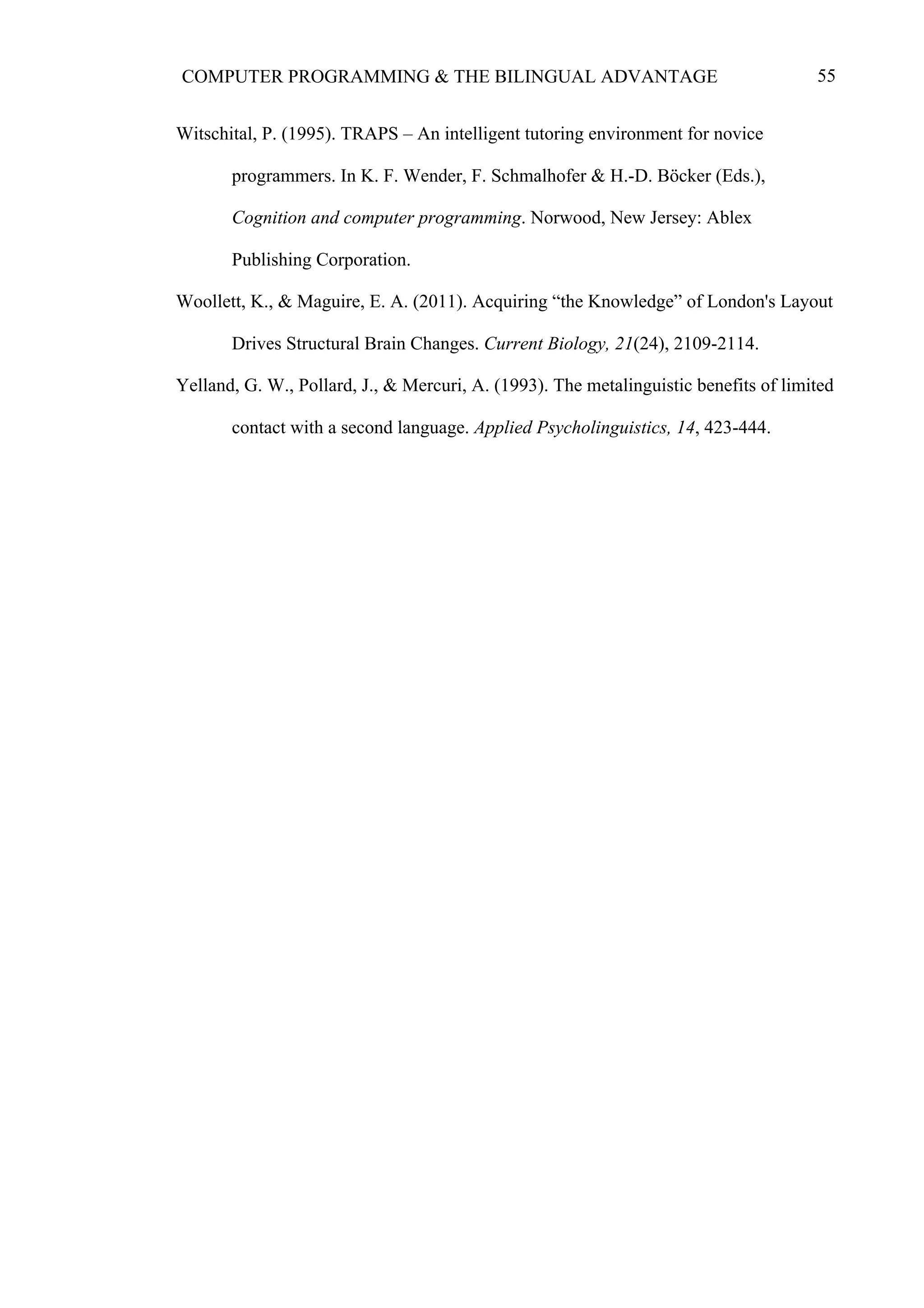This dissertation examines whether computer programmers exhibit enhanced executive control, as seen in bilinguals. The author conducted two executive function tasks with 10 professional and 10 adolescent programmers, compared to monolingual controls. In the Attention Networks Test, programmers had significantly faster reaction times, supporting the hypothesis. In the Stroop task, programmers were slower but not significantly so. Overall, the results provide preliminary evidence that programming experience may enhance executive control, as with bilingualism, warranting future research.


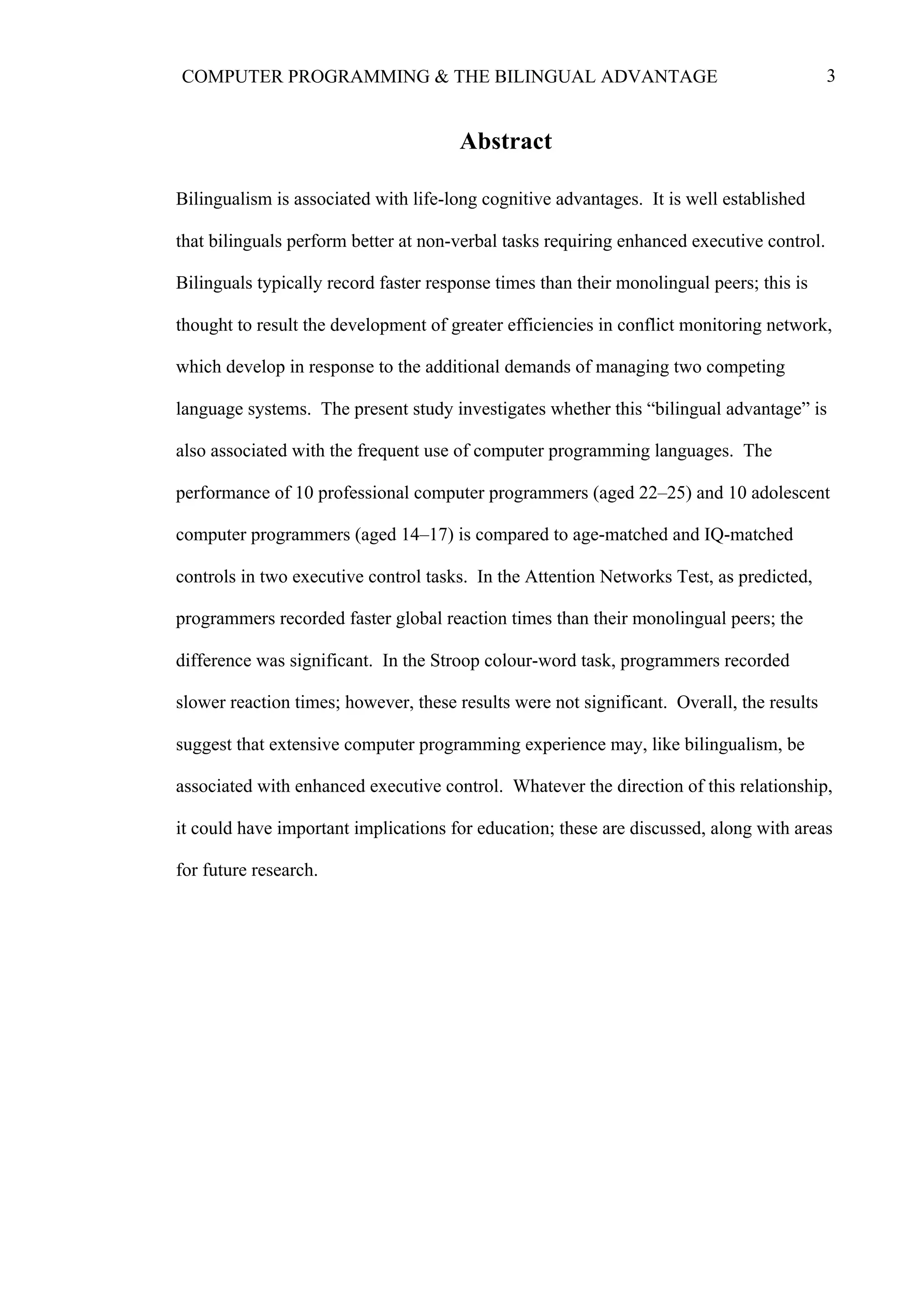


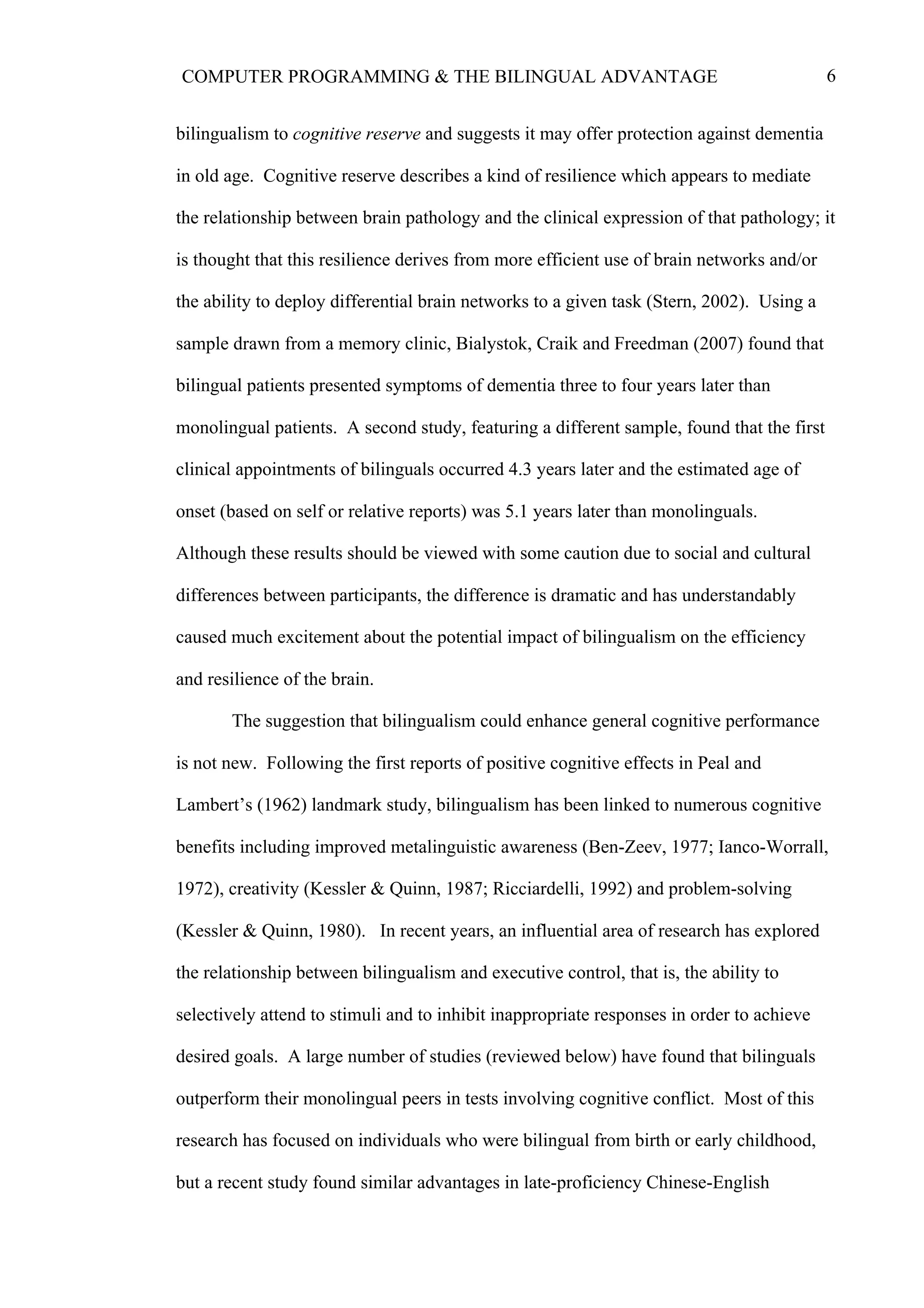

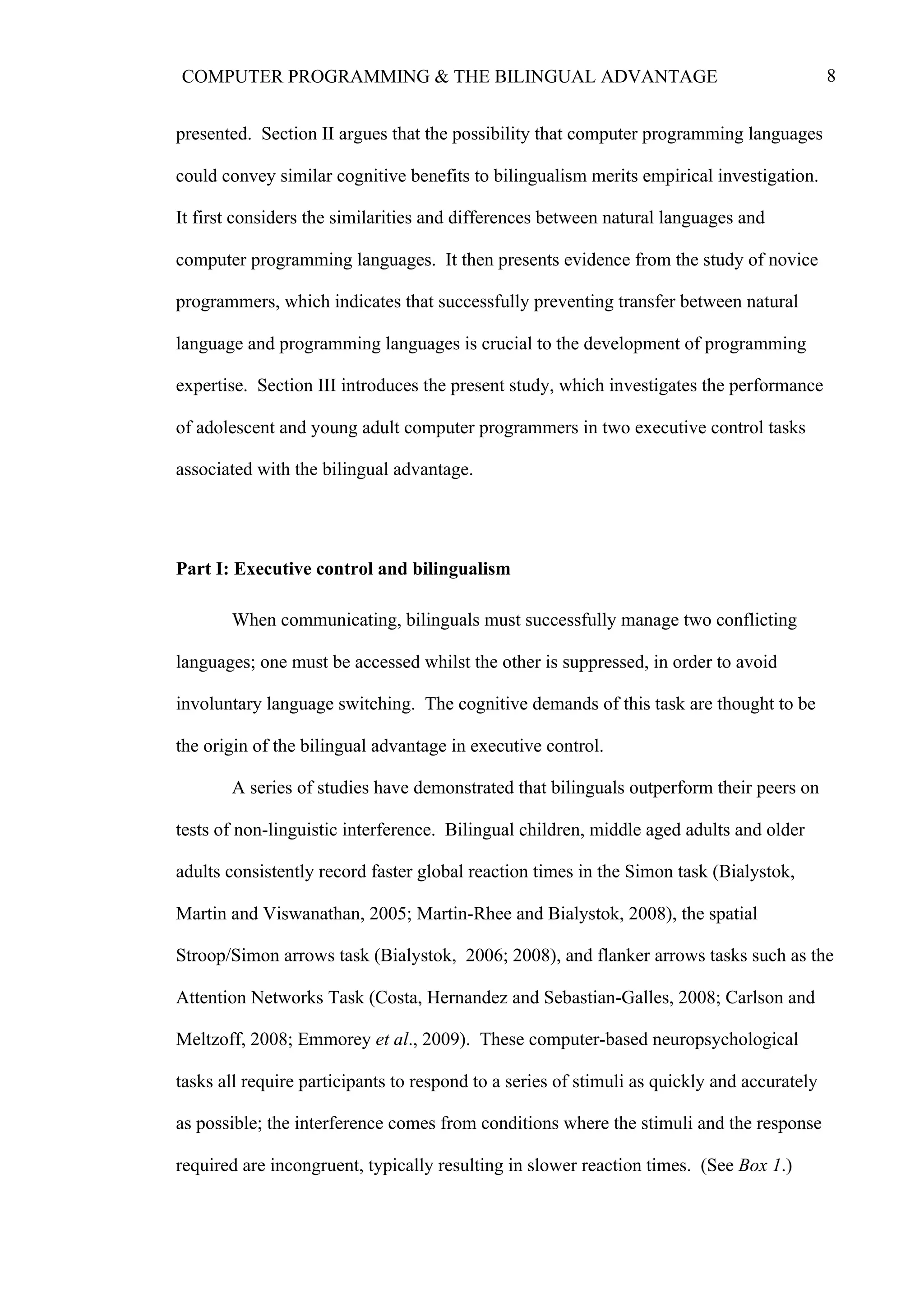
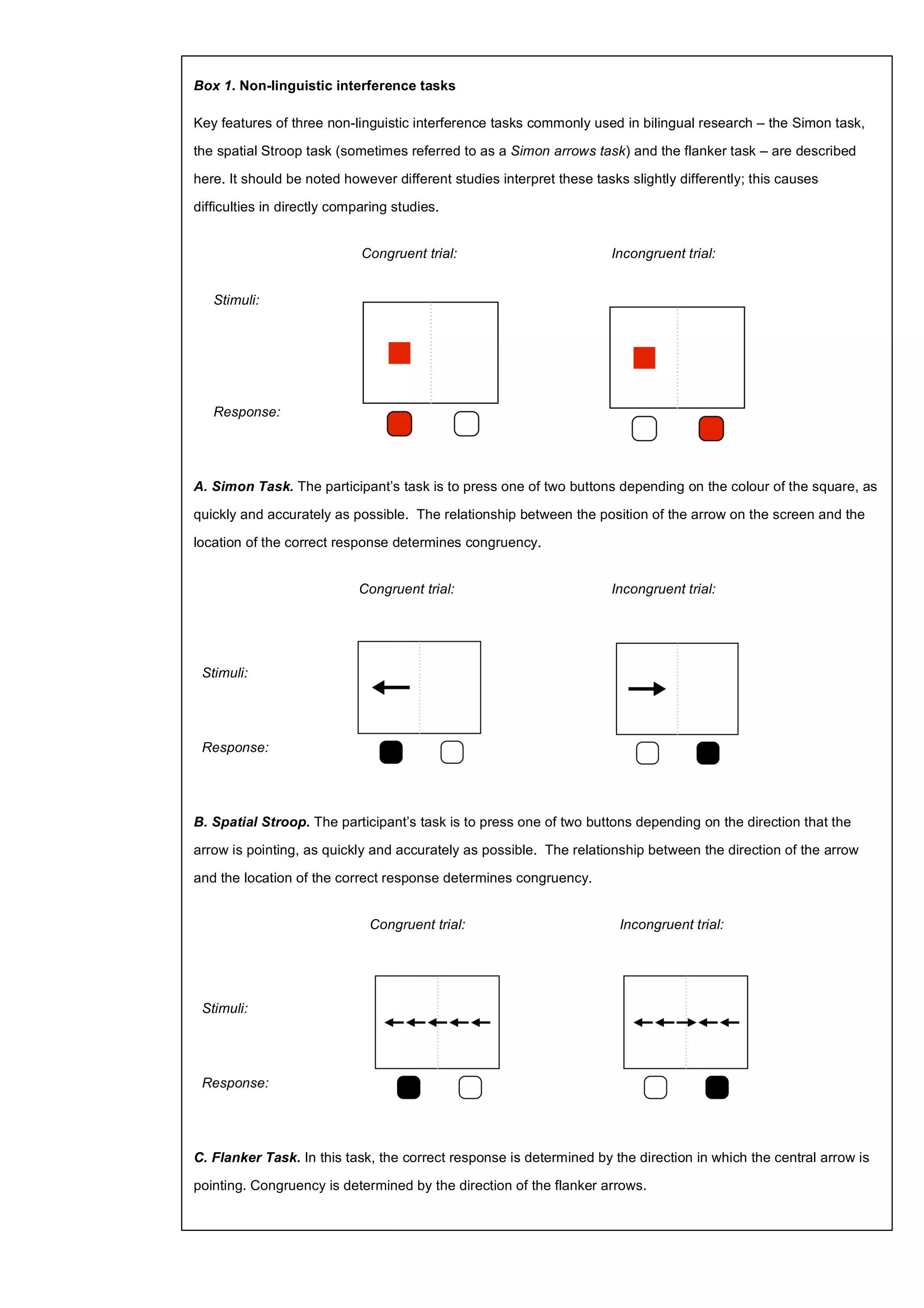
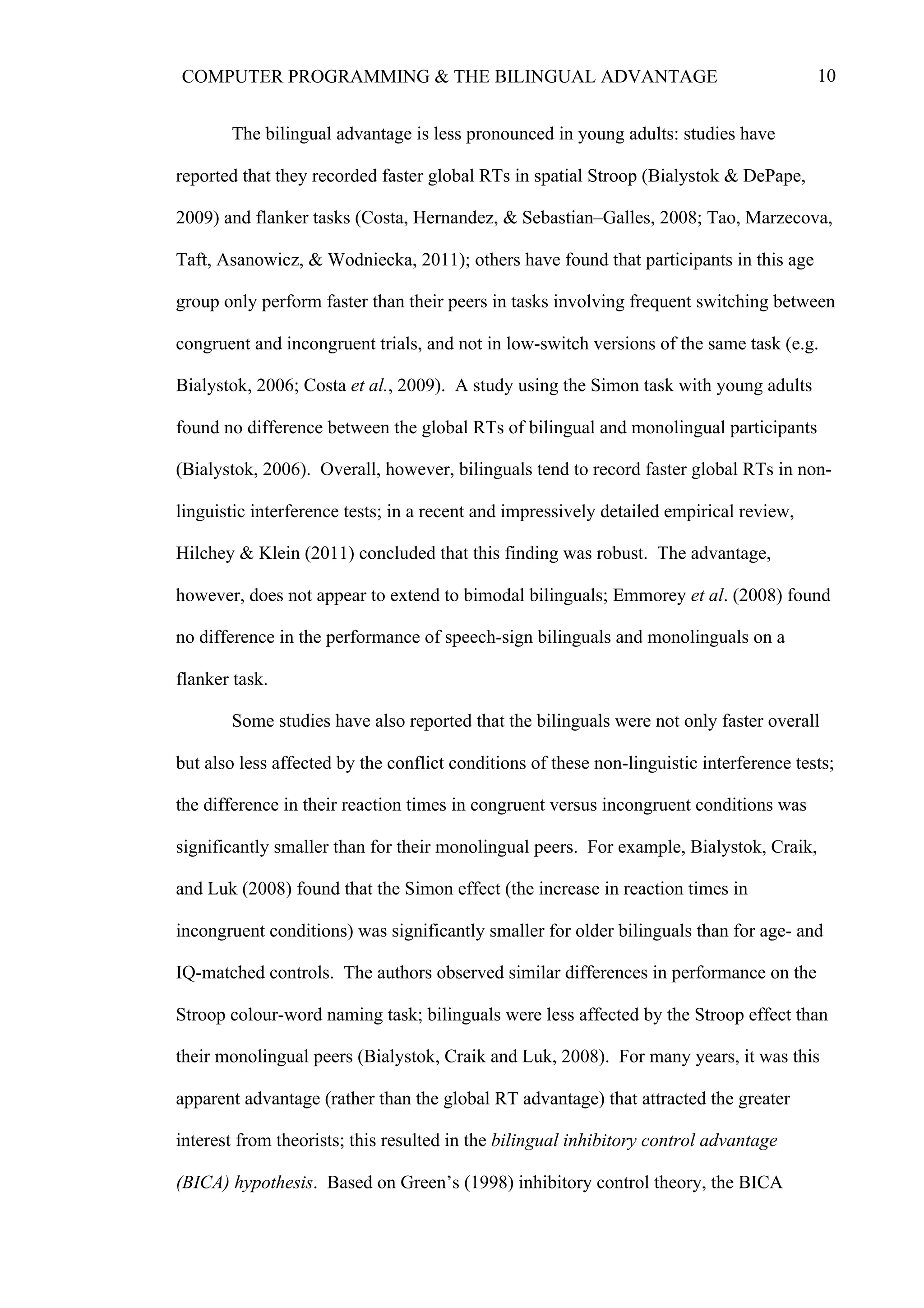
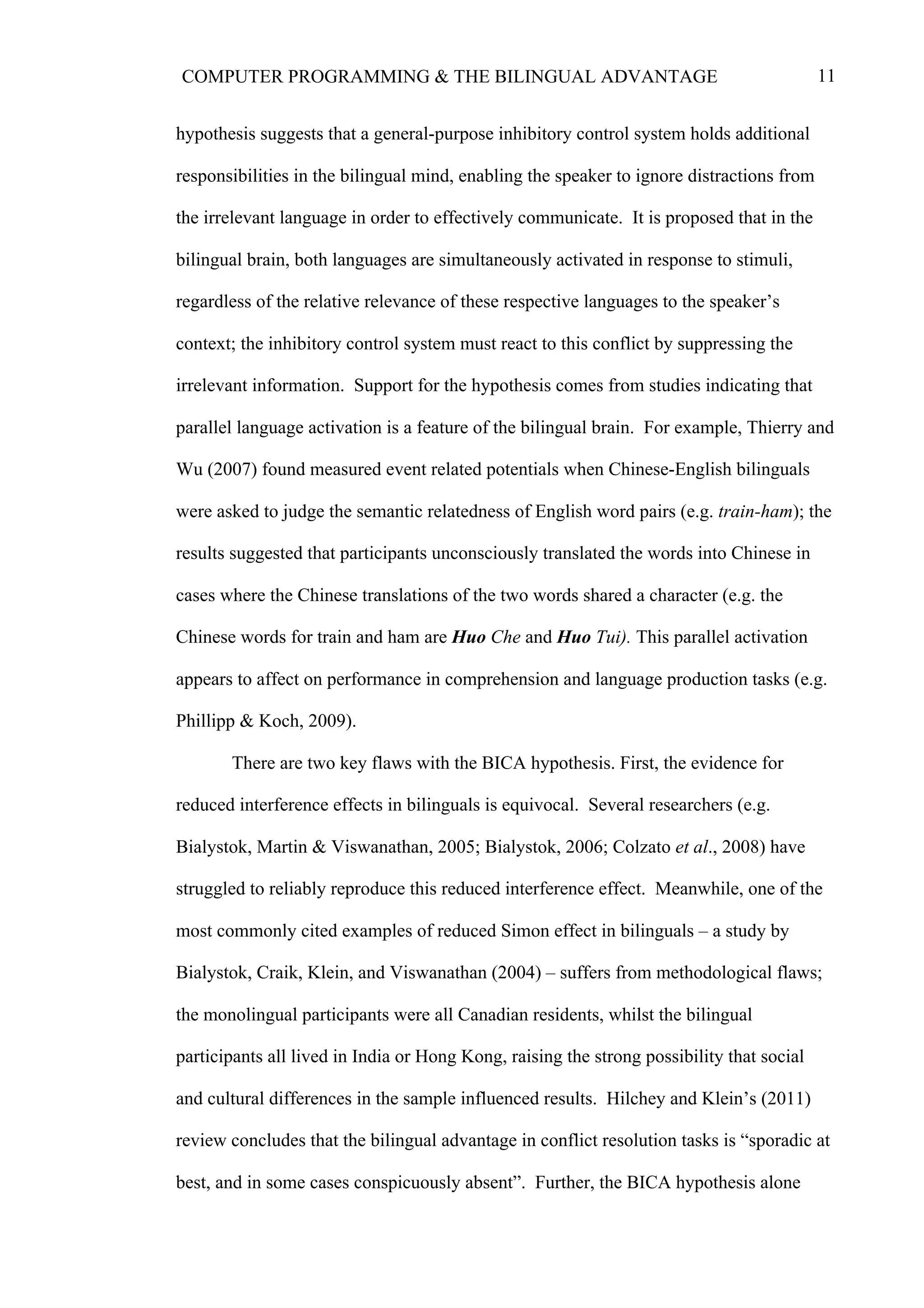
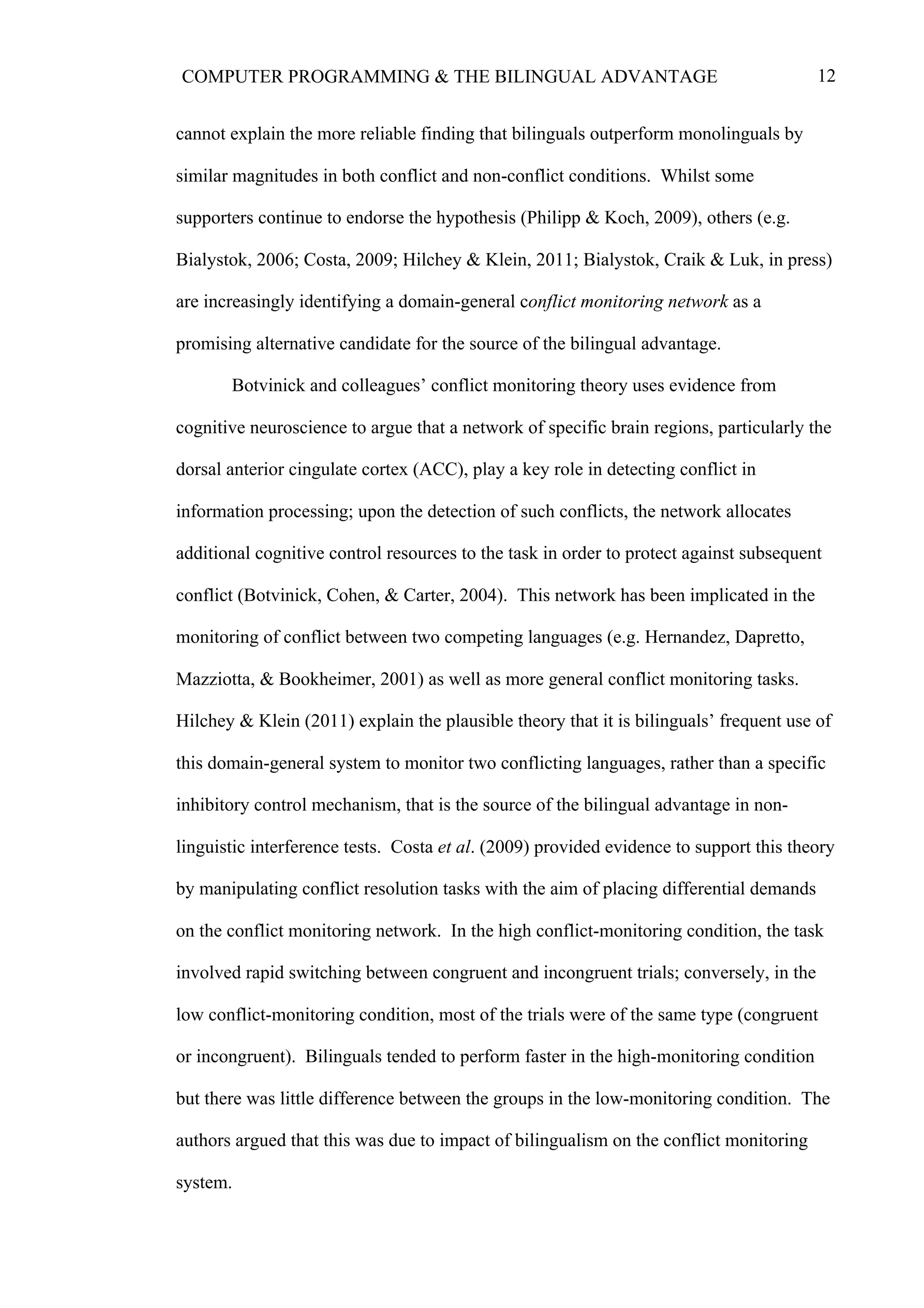

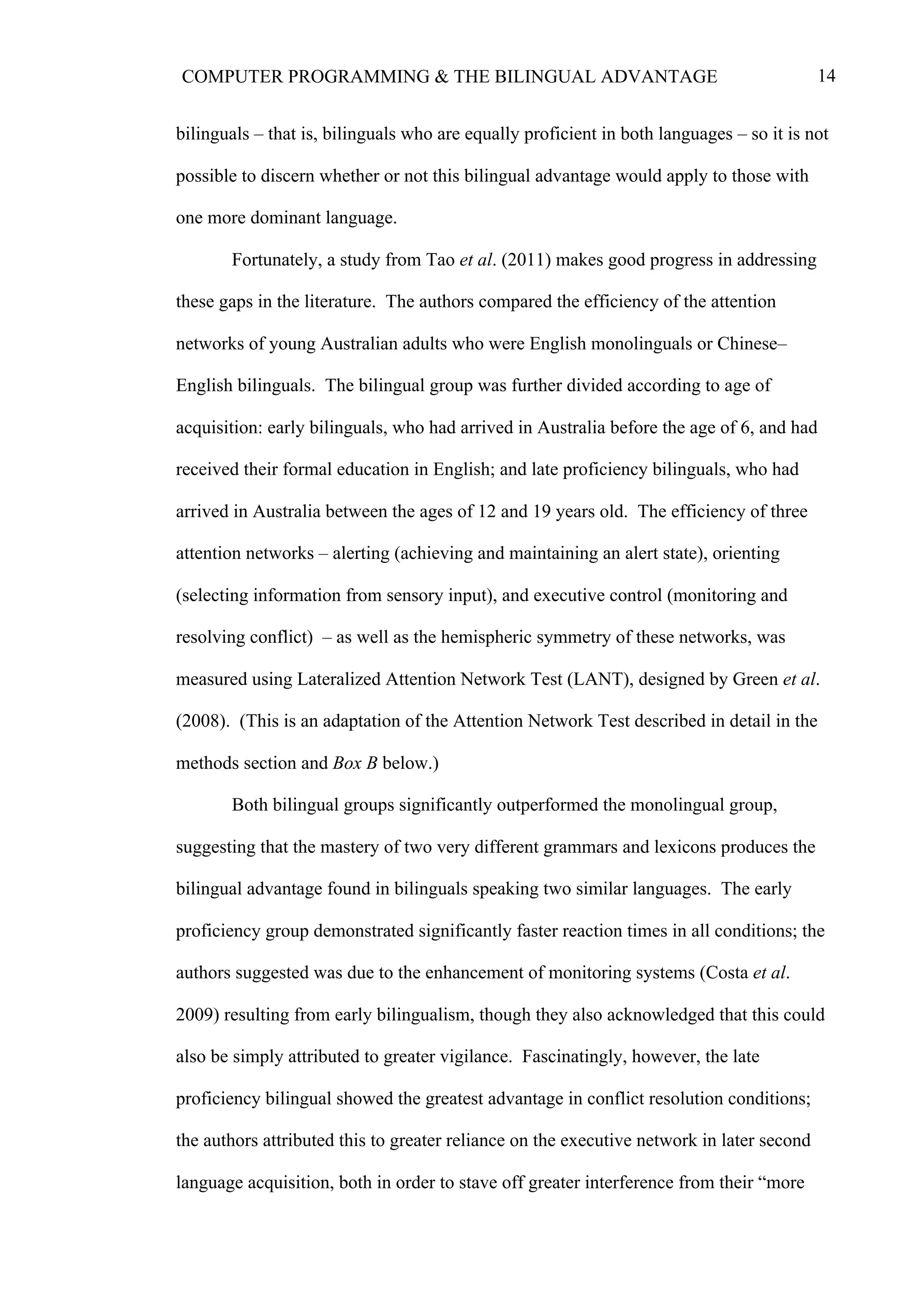
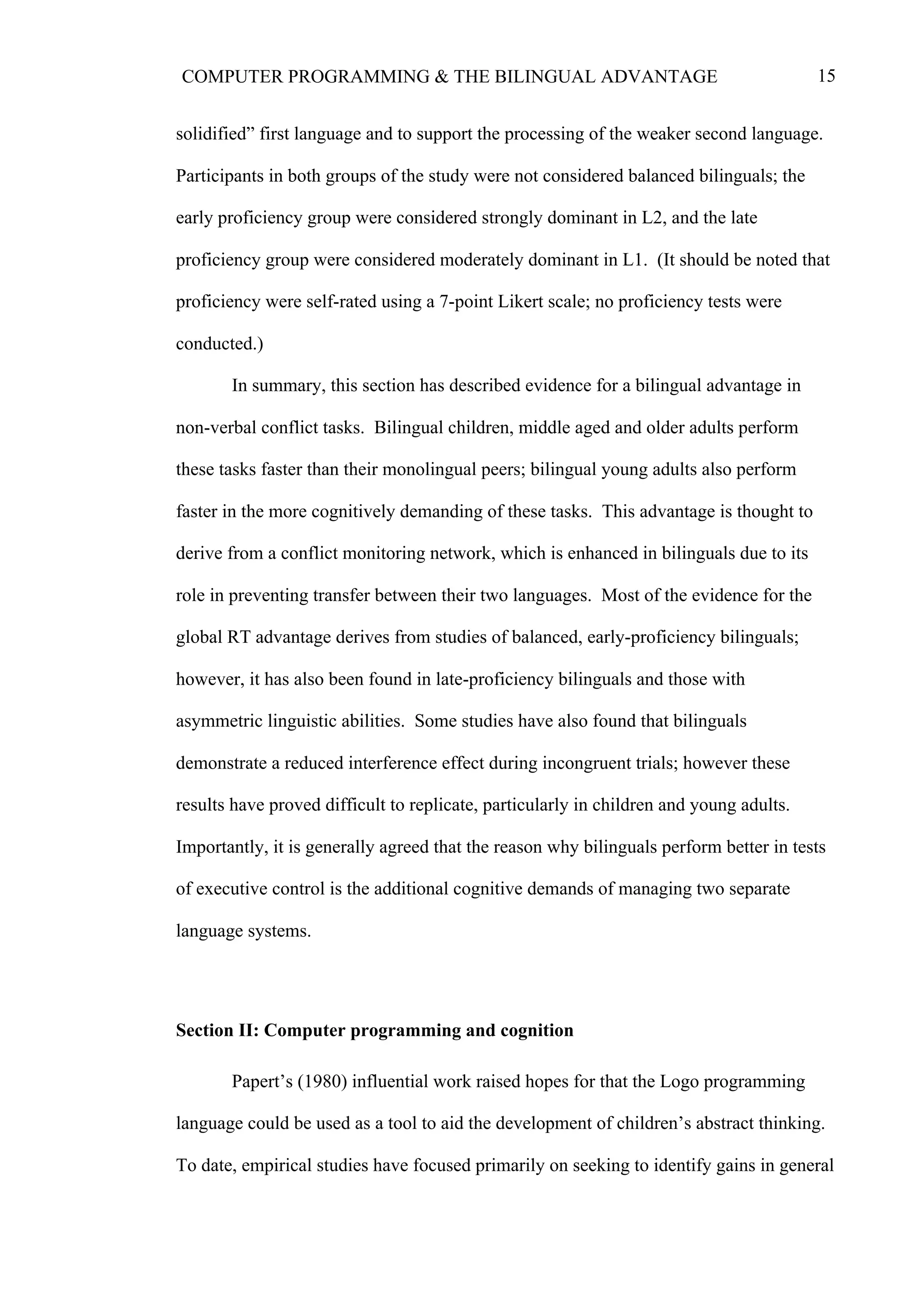
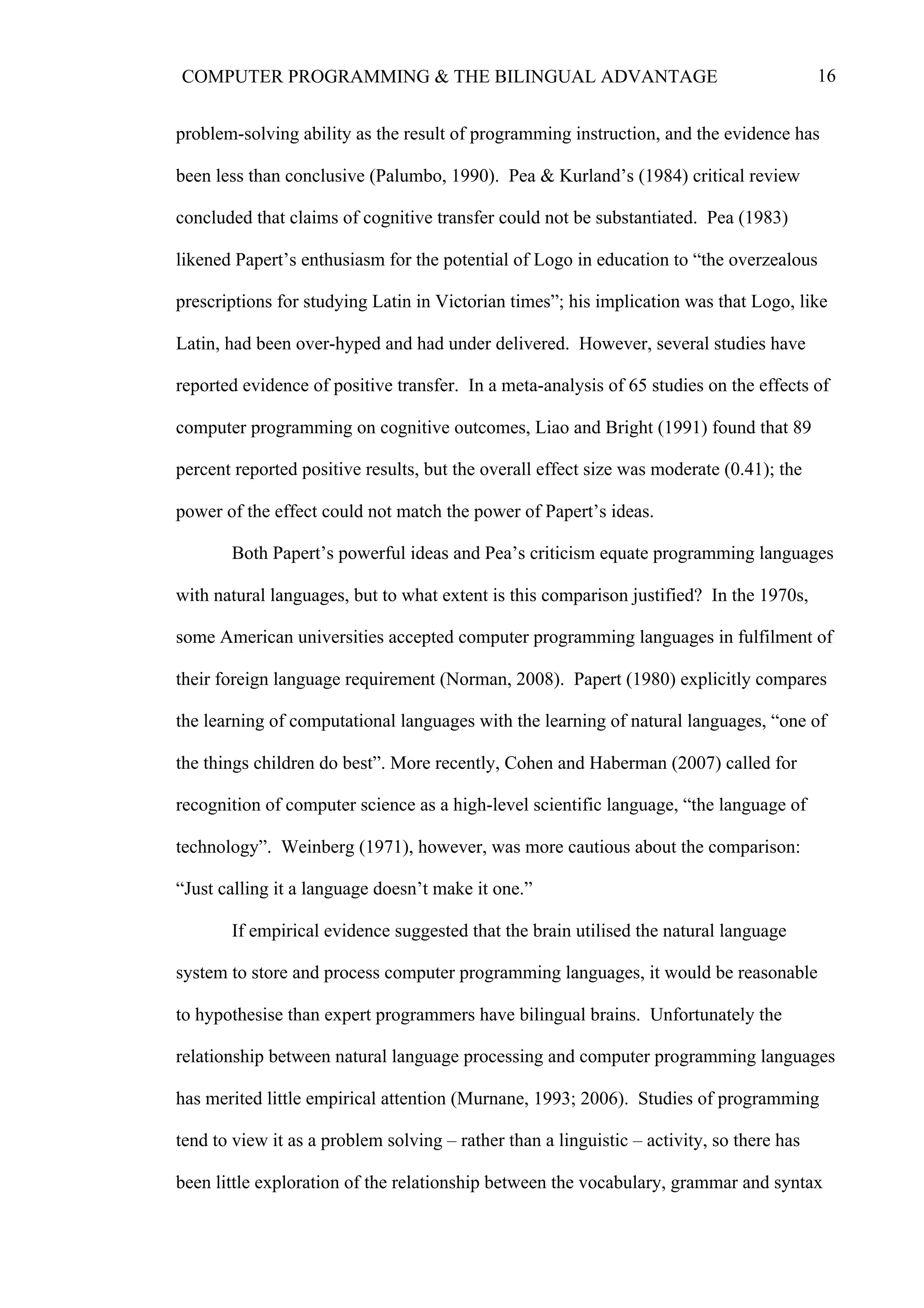
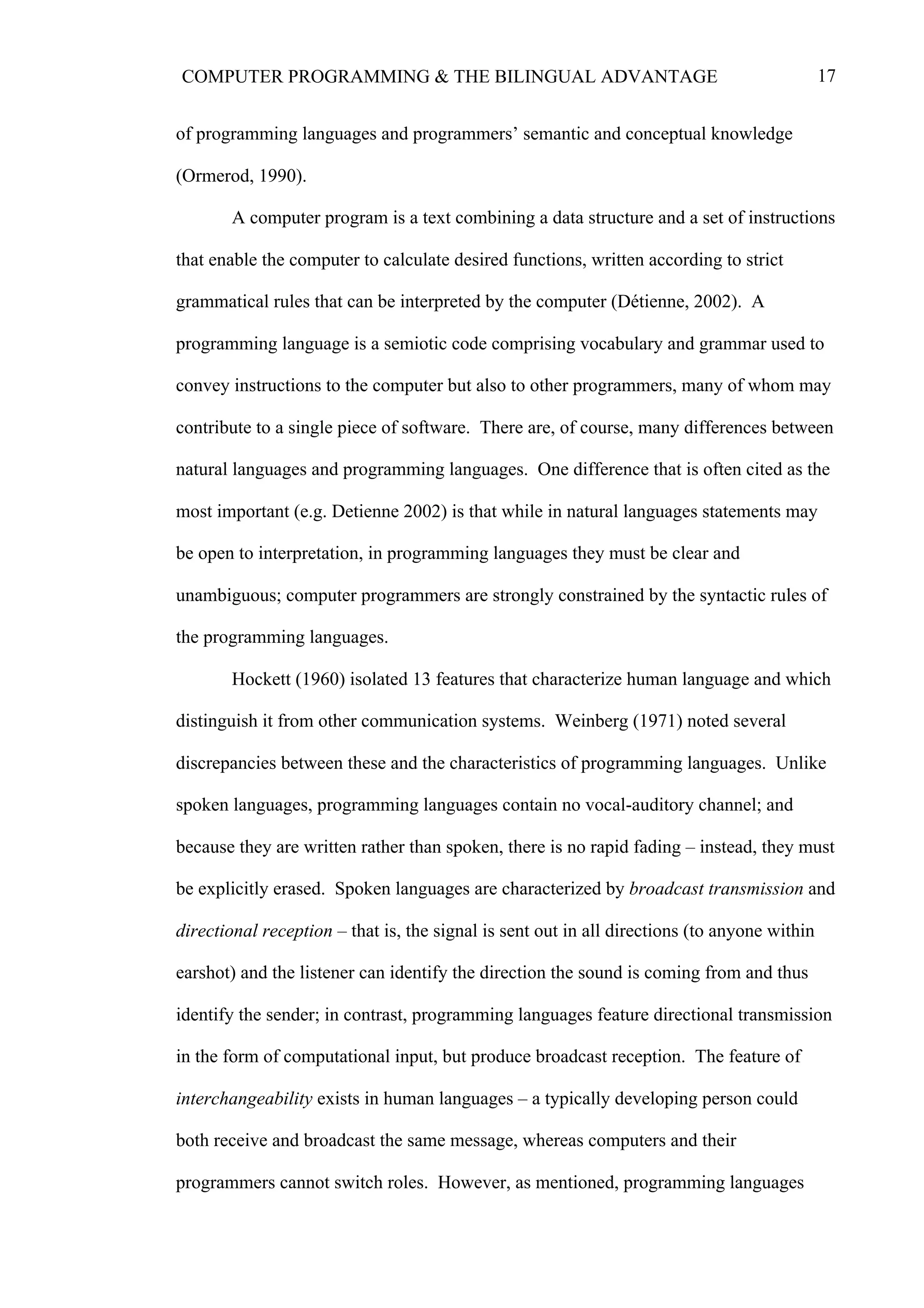
![18COMPUTER PROGRAMMING & THE BILINGUAL ADVANTAGE
also convey information between human beings. Tremblay and Sorenson (1985, p.74)
consider this to be “the most important goal of a programming language”; a survey of
over 780 programmers found that 95% agreed that understanding existing code is a
significant part of their job (Cherubini, Venolia, DeLine, & Ko, 2007). Like natural
languages, computer programming languages allow people to collaborate and share
ideas.
Although there are differences between programming languages and natural
languages, there are also many similarities. Weinberg (1971) concedes that computer
programming languages appear to “live up to or exceed natural language[s]’ in the
remaining nine areas identified by Hockett (1960). For example, like natural languages,
programming languages are arbitrary – there is no direct connection between the word
and its meaning (an aspect that proves confusing for novices, as discussed below); both
programming and natural languages also have duality of patterning (they can be broken
down into small parts which can be recombined to form new meaning).
Norman (2008) argues that programming languages technically meet “the three
most important criteria” for languages. First, a language must be meaningful; whilst
natural languages use words and sentences to convey meaning, programming languages
achieve this via objects, functions and relations. Second, a language should allow
displacement, that is, communication about things that are not immediately present;
natural language achieves this with concepts such as yesterday or somewhere else, and
programming languages systematically convey instructions for the future and reference
data from the past. Third, a language must be productive, allowing the expression of
ideas that have never been expressed before; computer programming languages are
particularly strong in this respect.
Few studies have systematically compared natural and programming languages.
Kokol, Podgorelec, Zorman, Kokol, and Njivar (1999) provided a rare exception. The](https://image.slidesharecdn.com/dissertationfinal-140523112640-phpapp01/75/Young-Minds-and-Computer-Coding-18-2048.jpg)
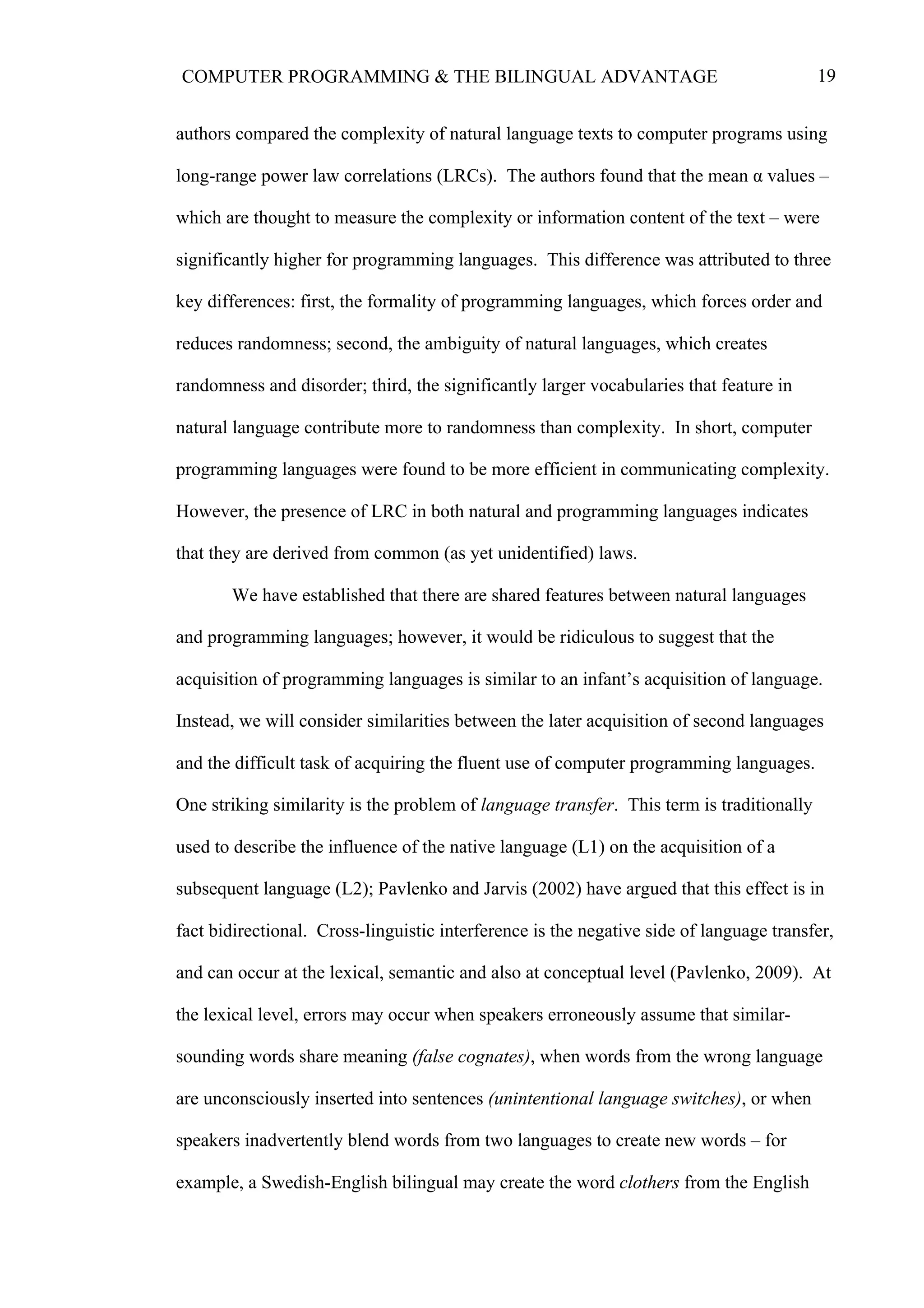
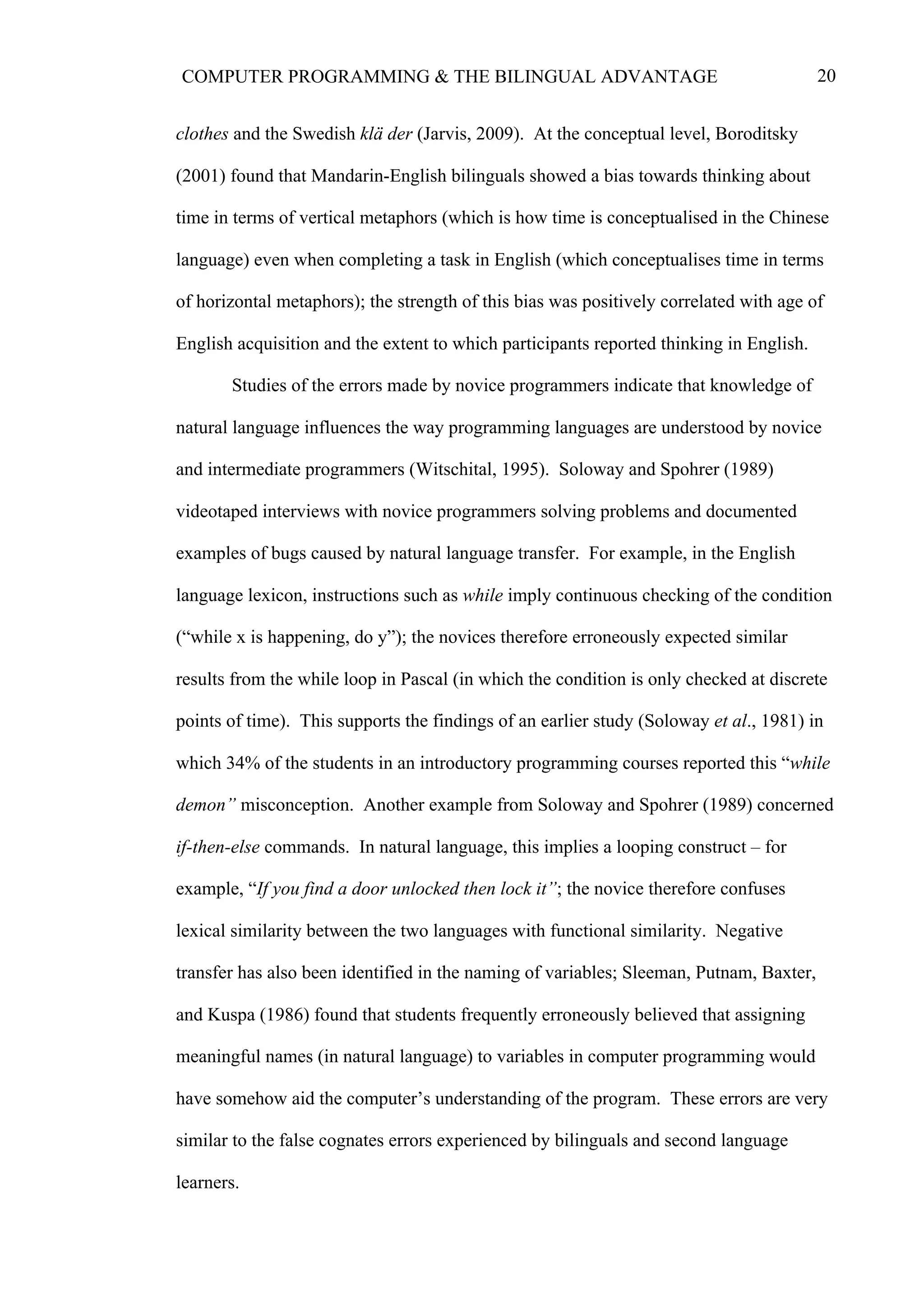
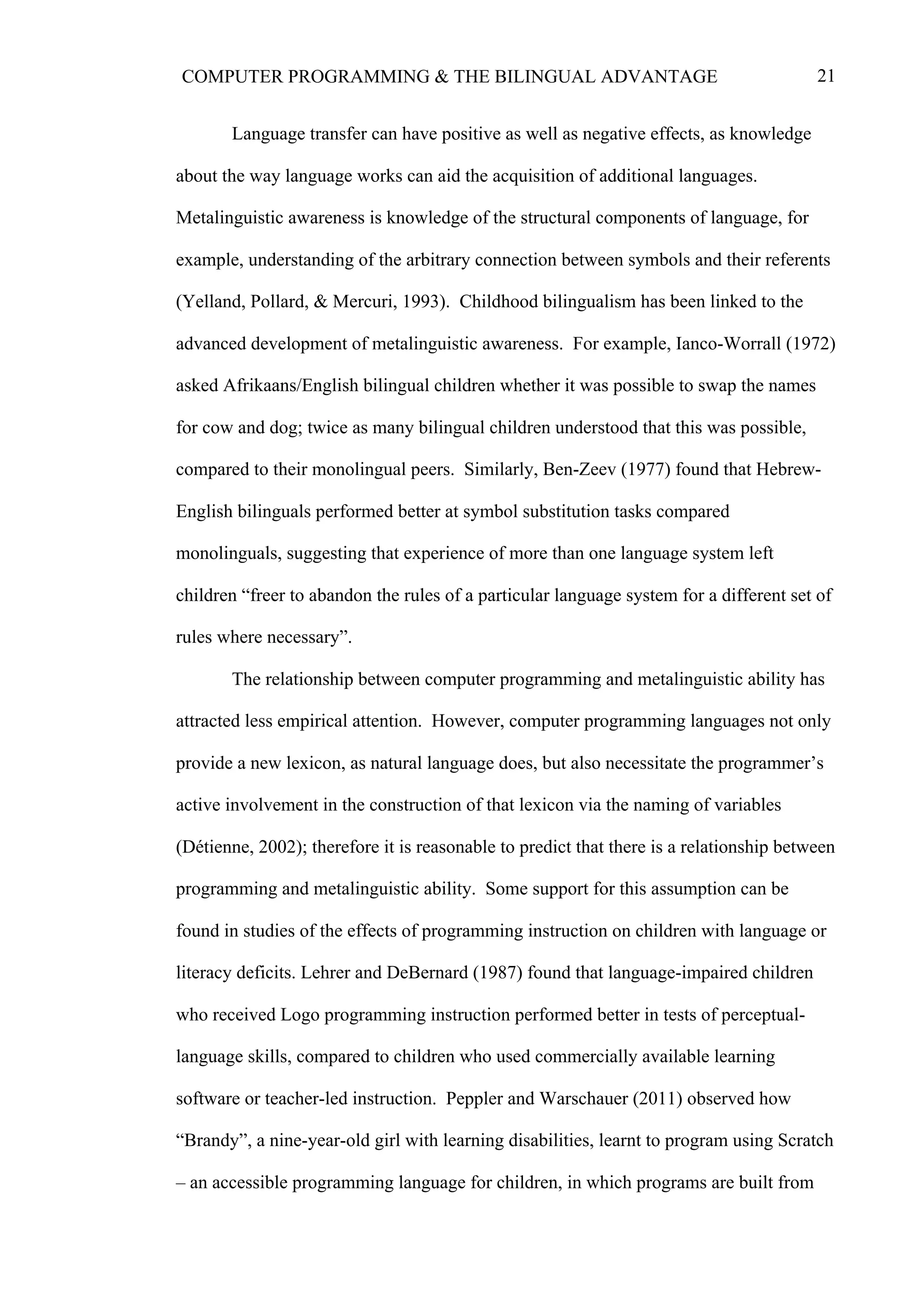
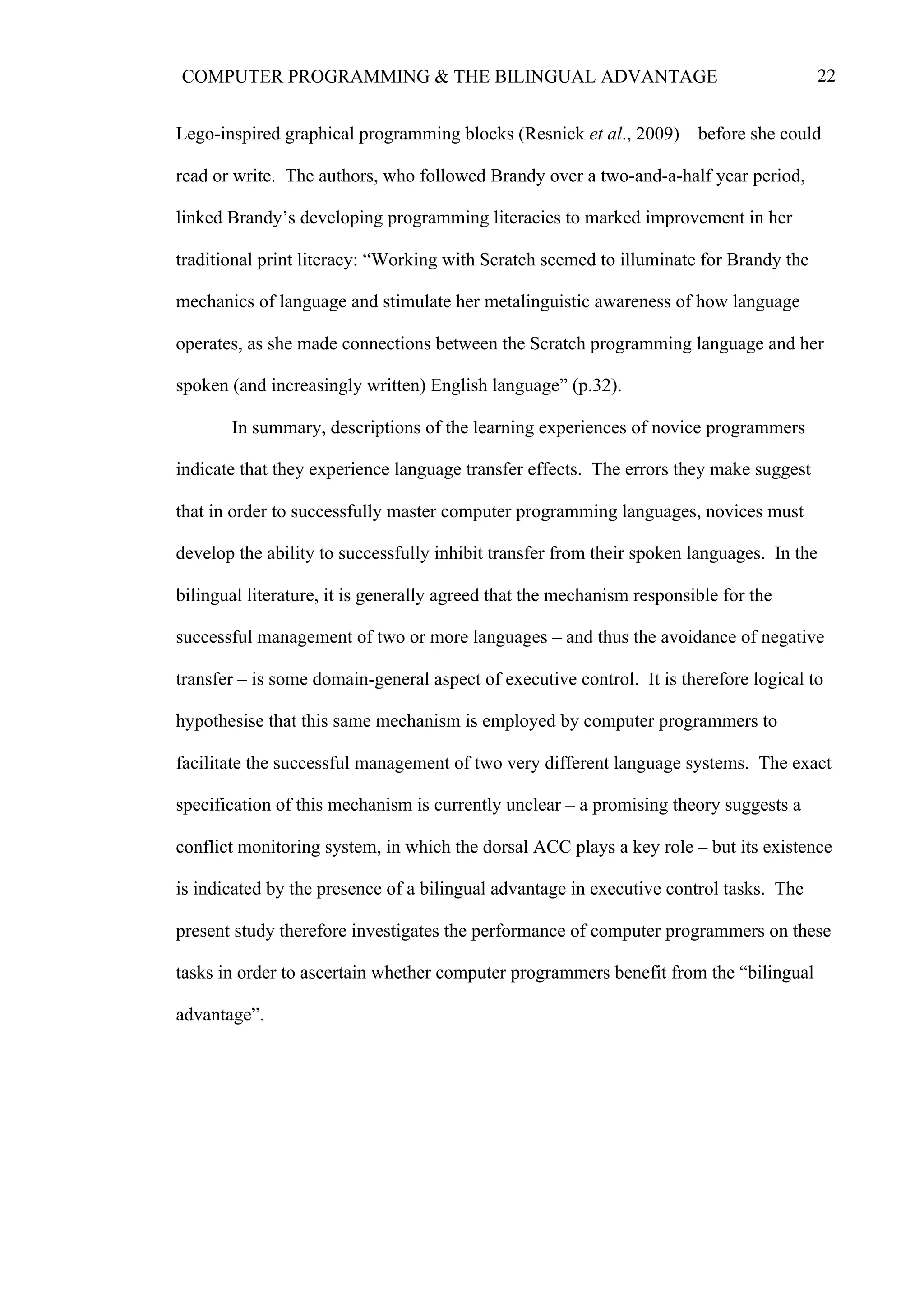
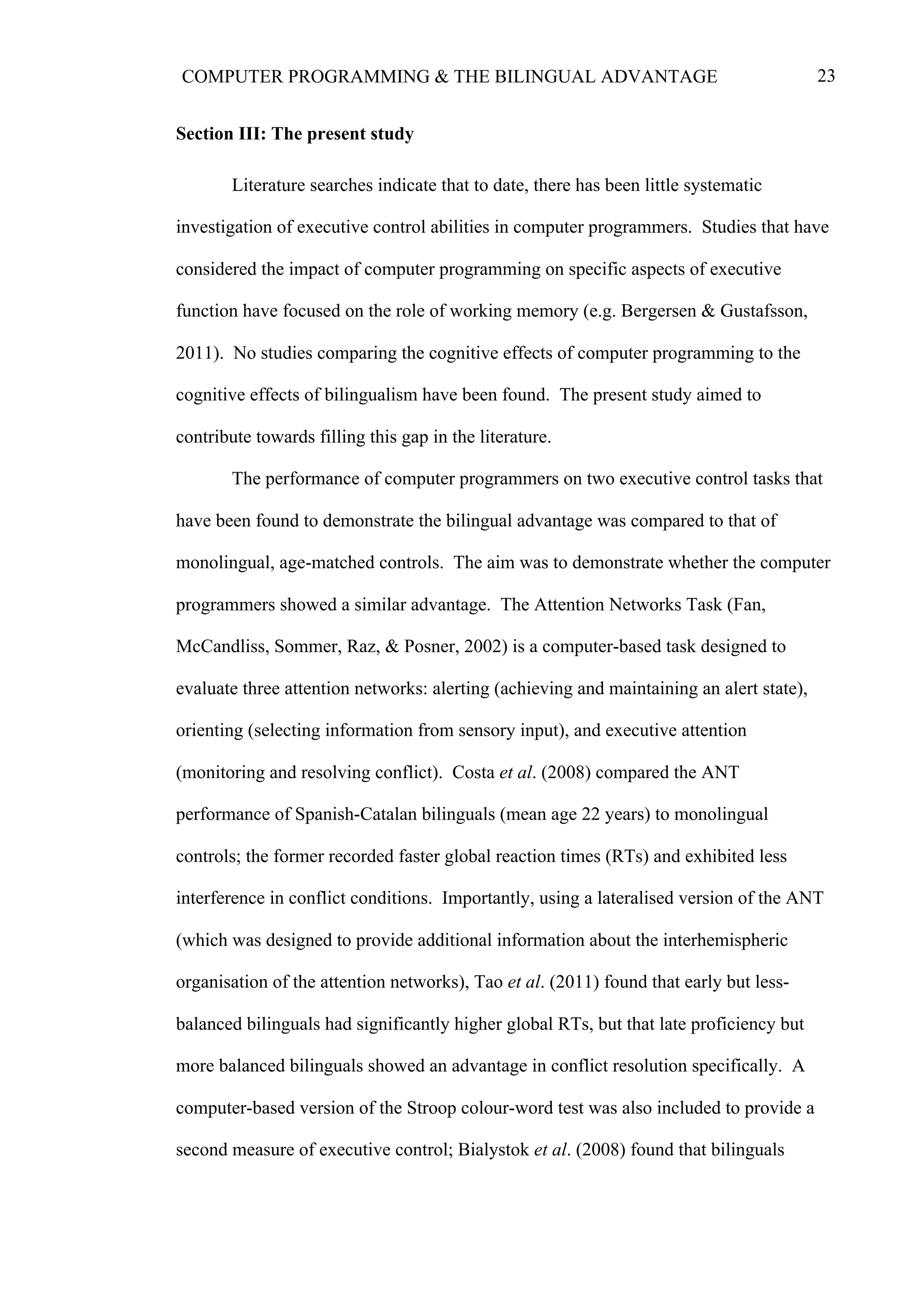
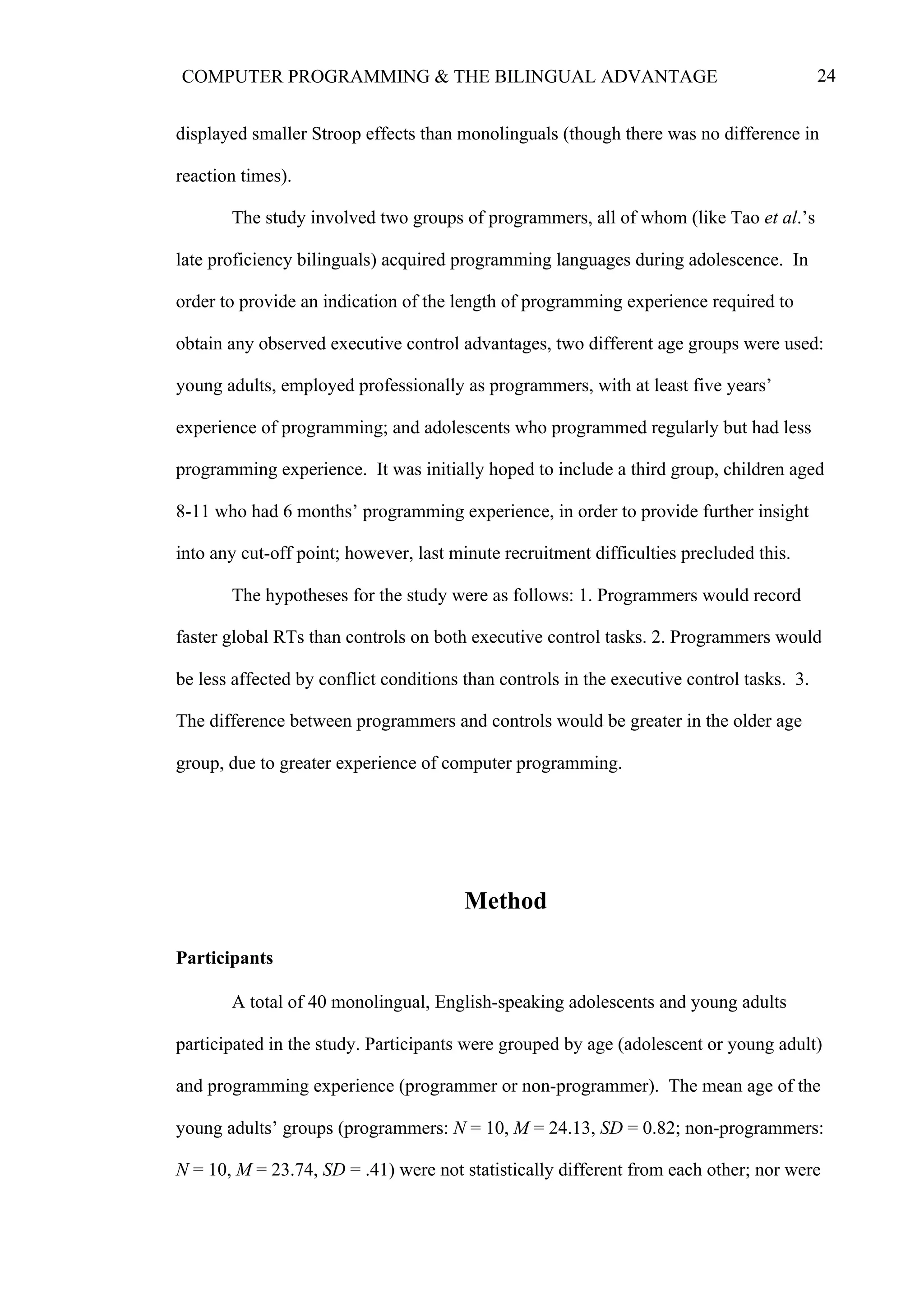
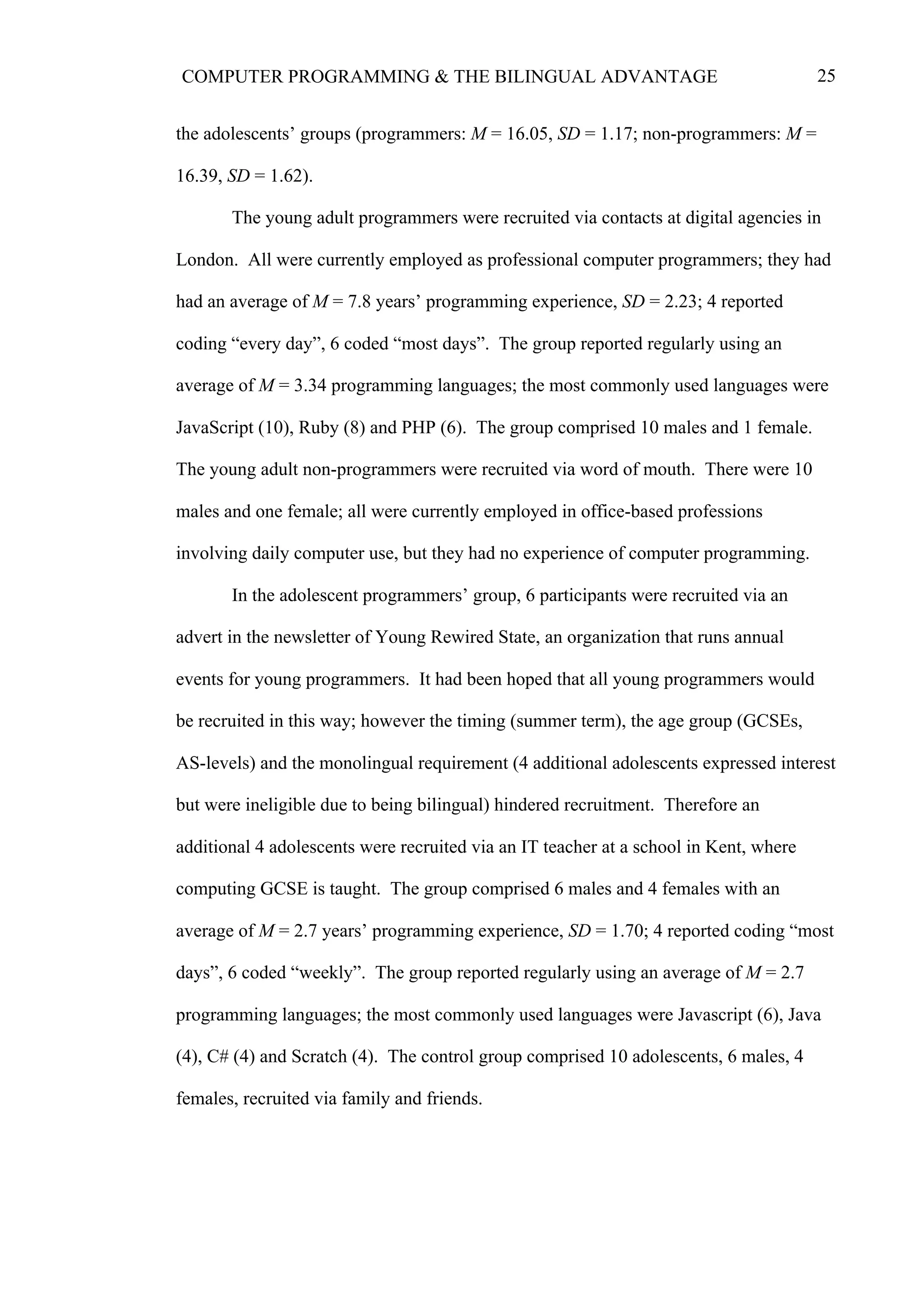


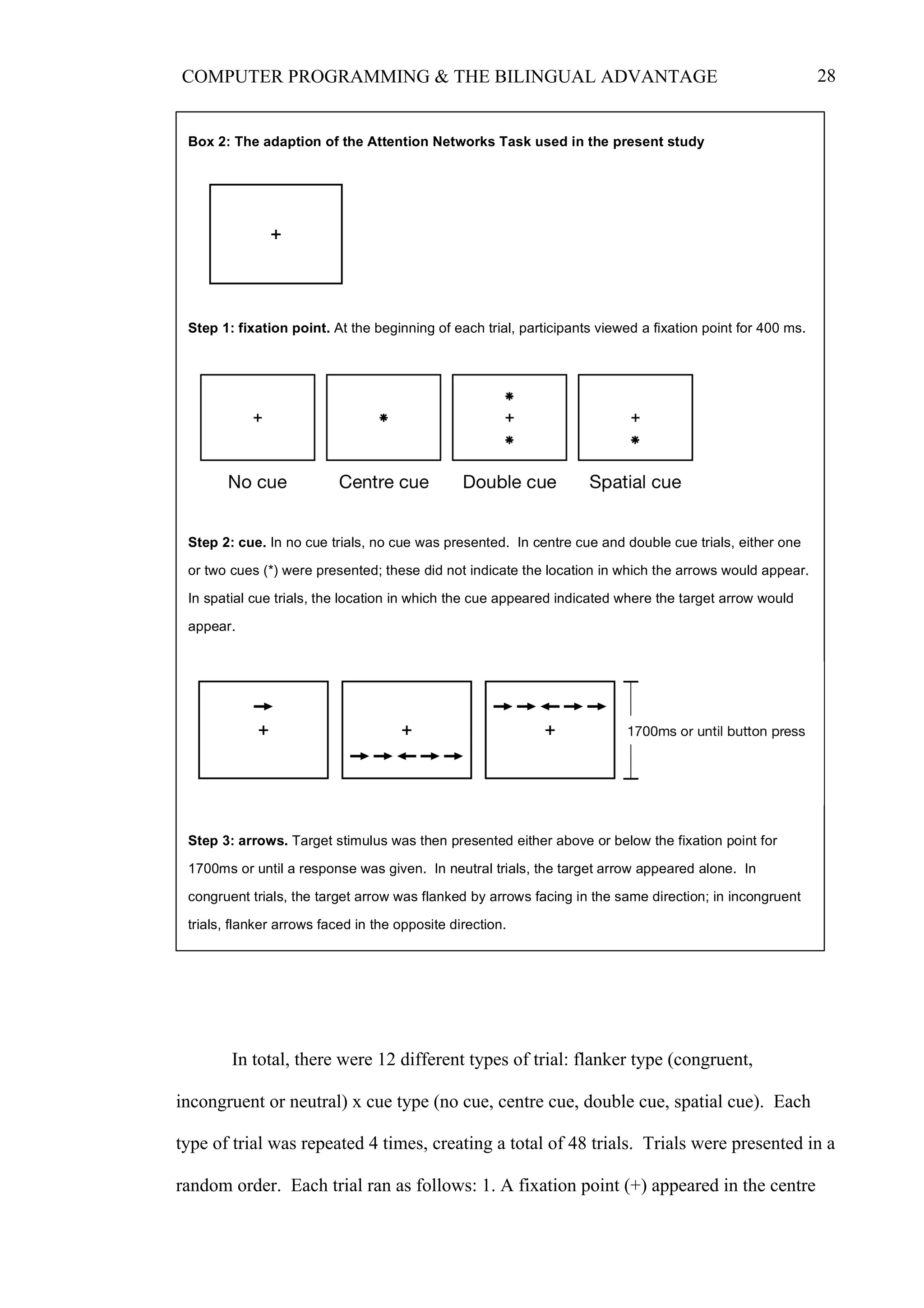
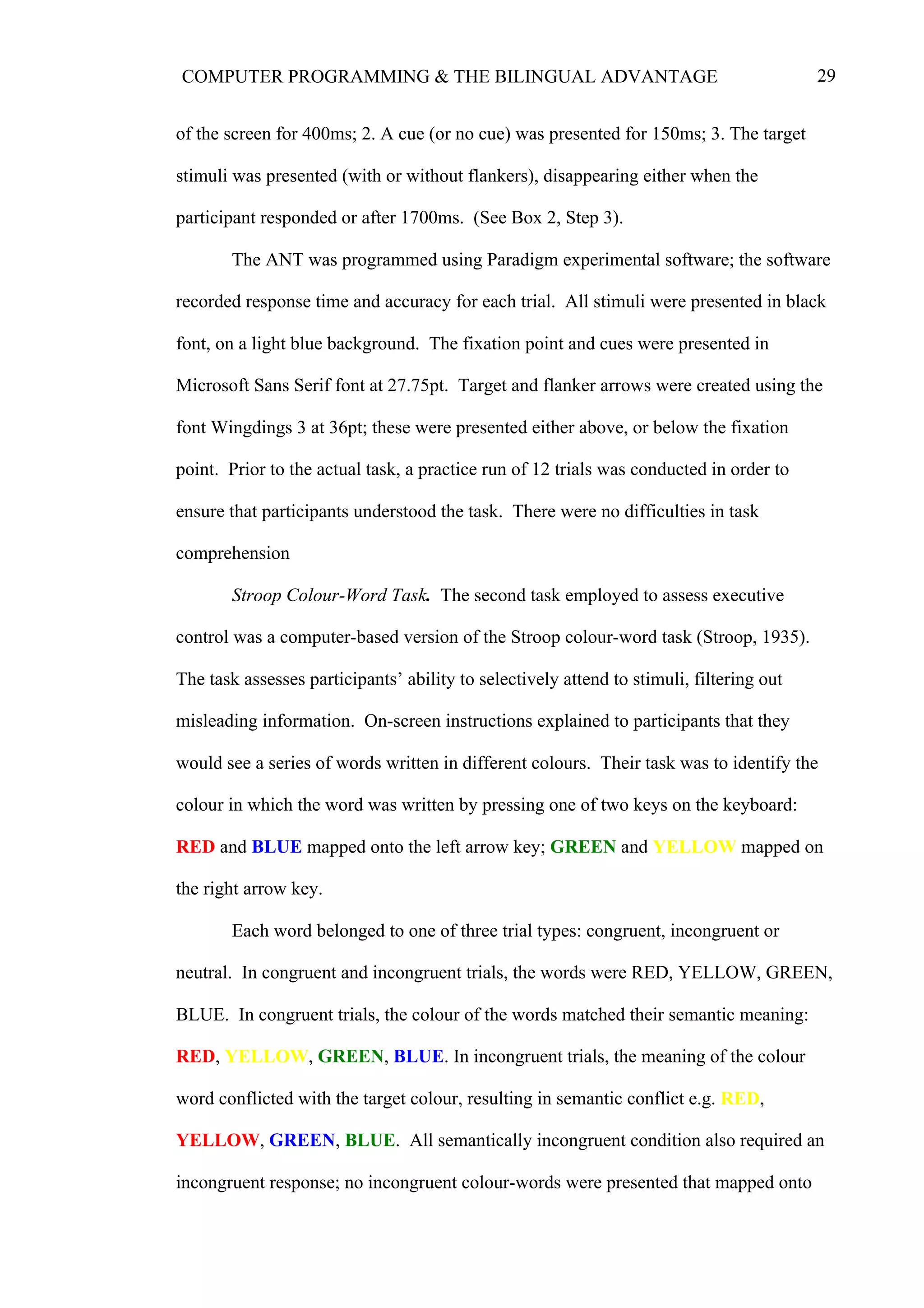
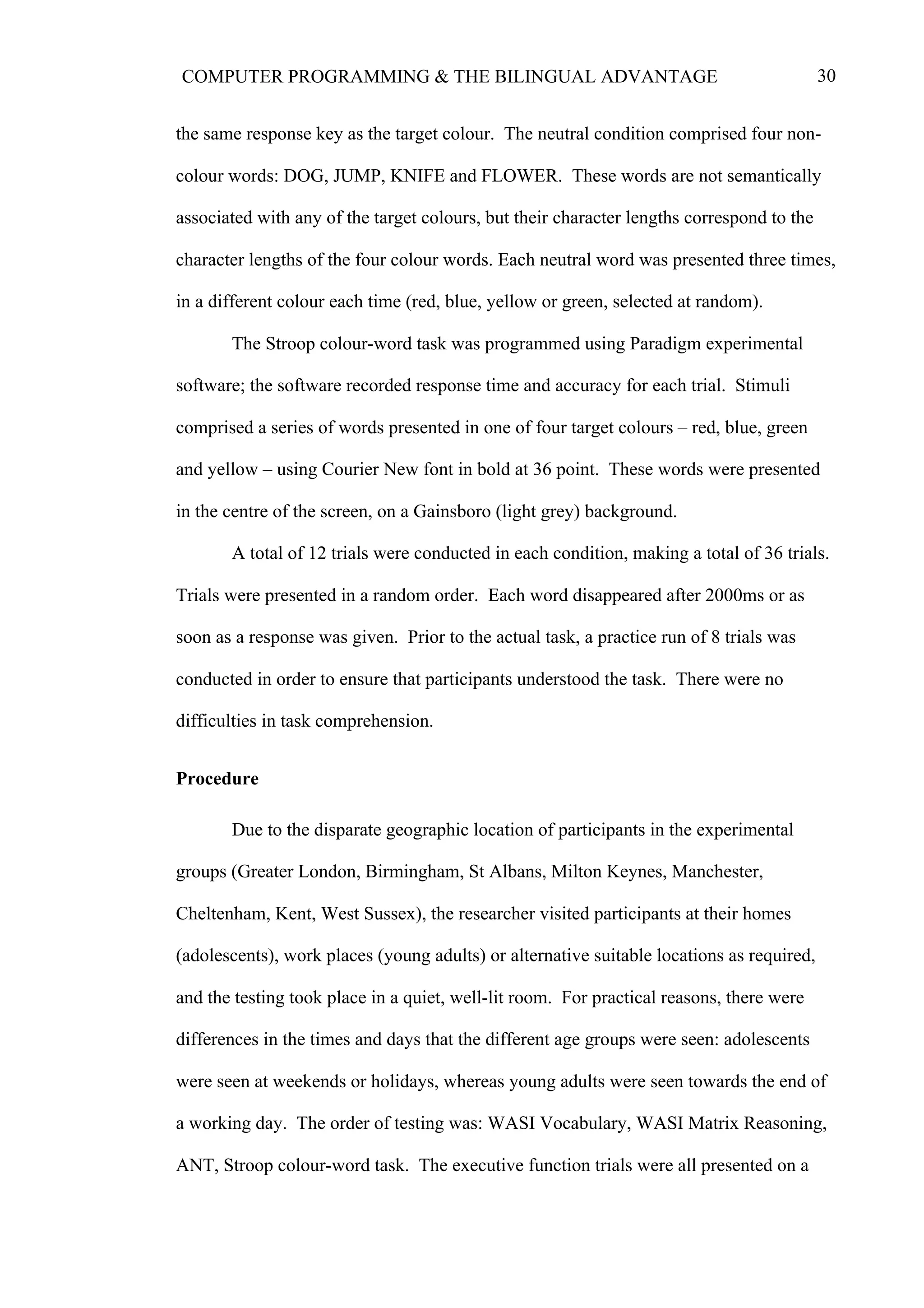



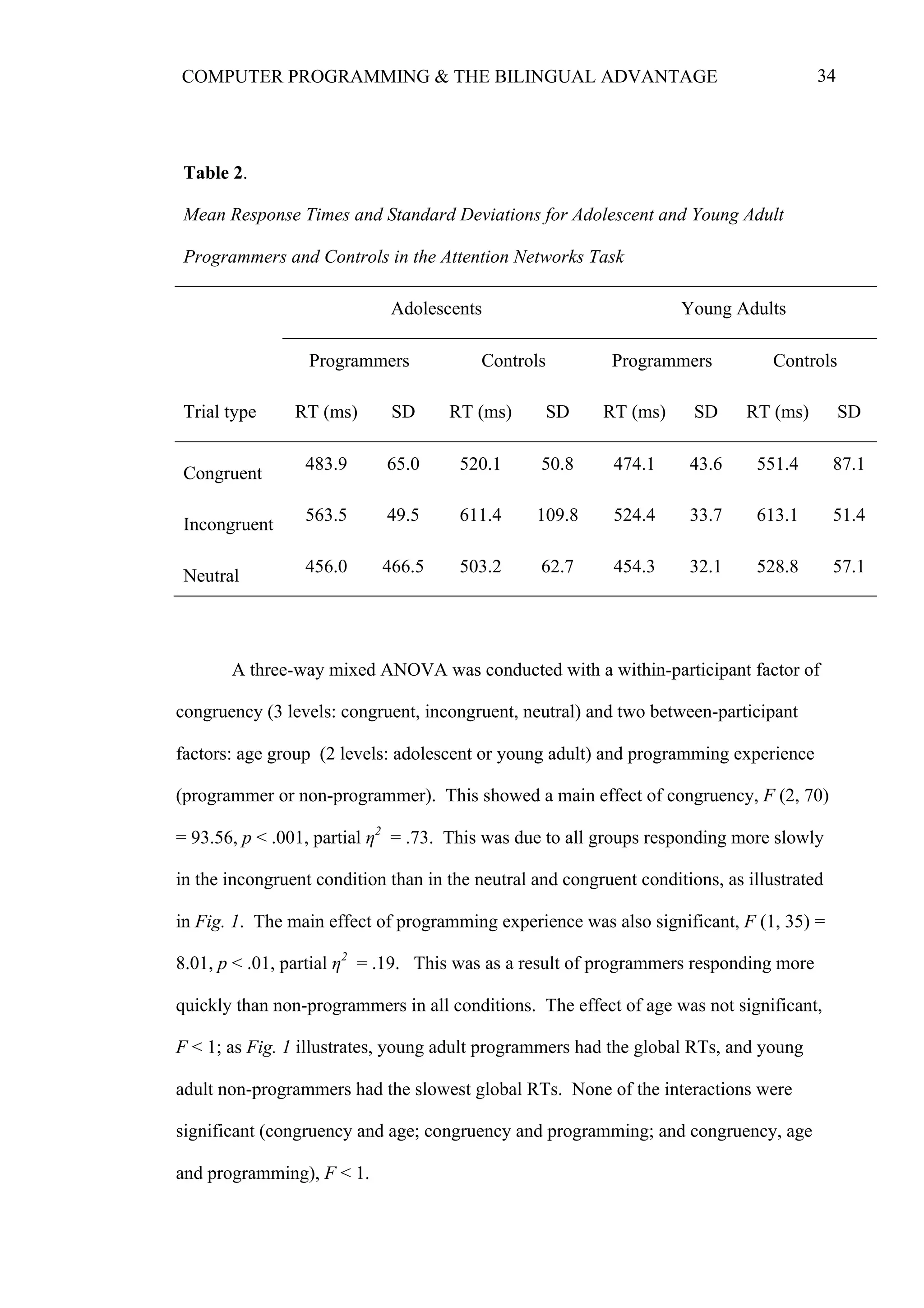
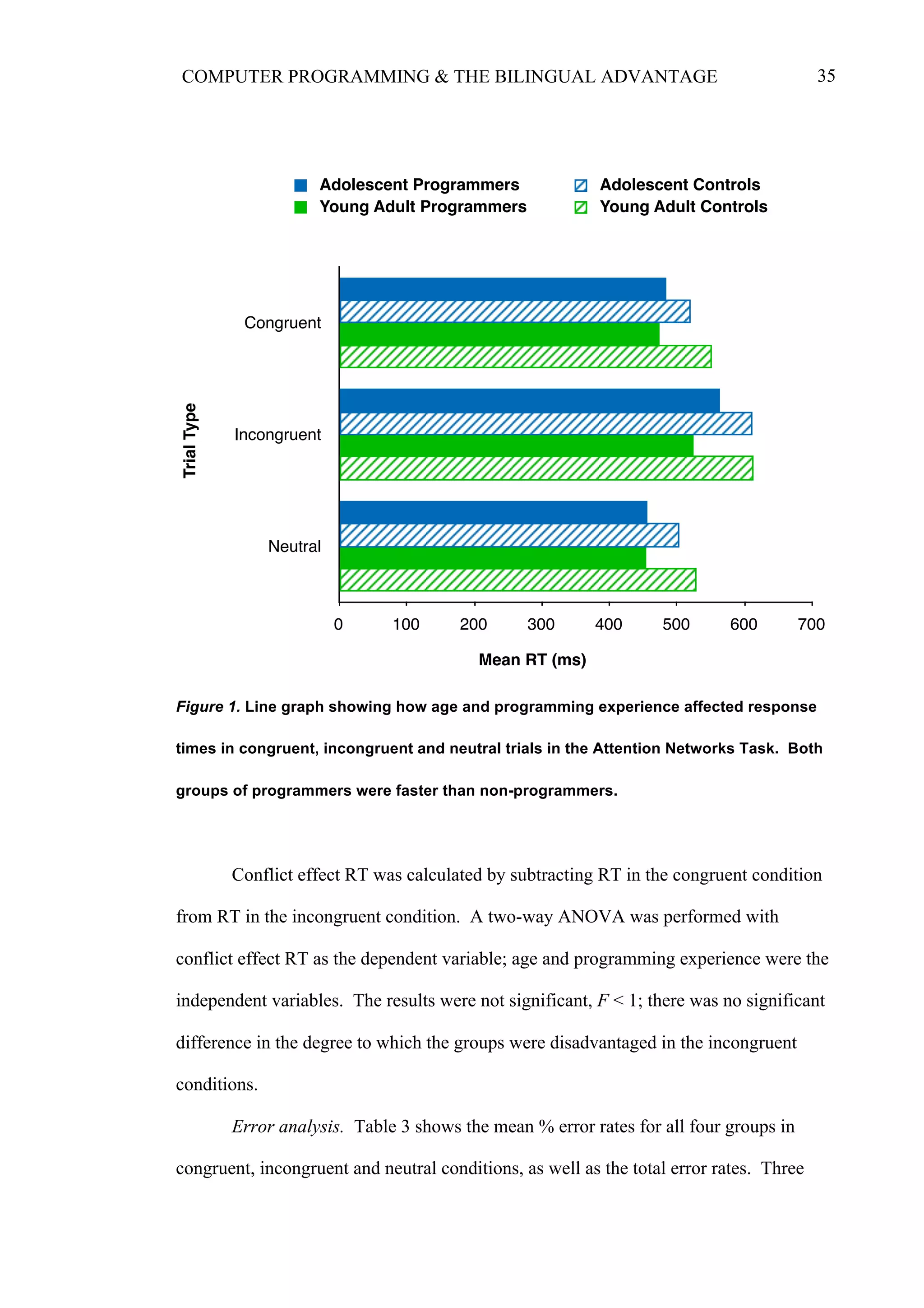
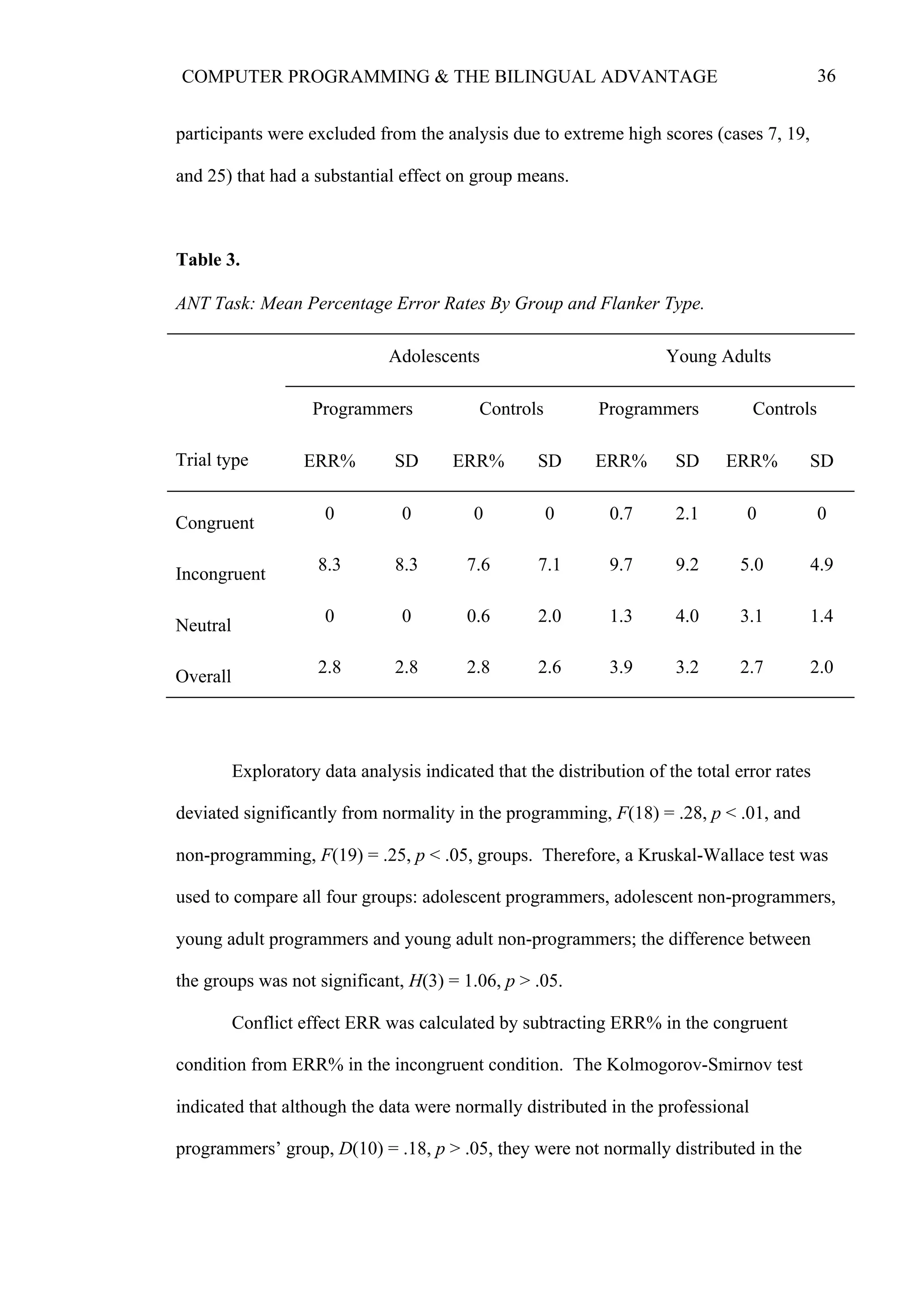



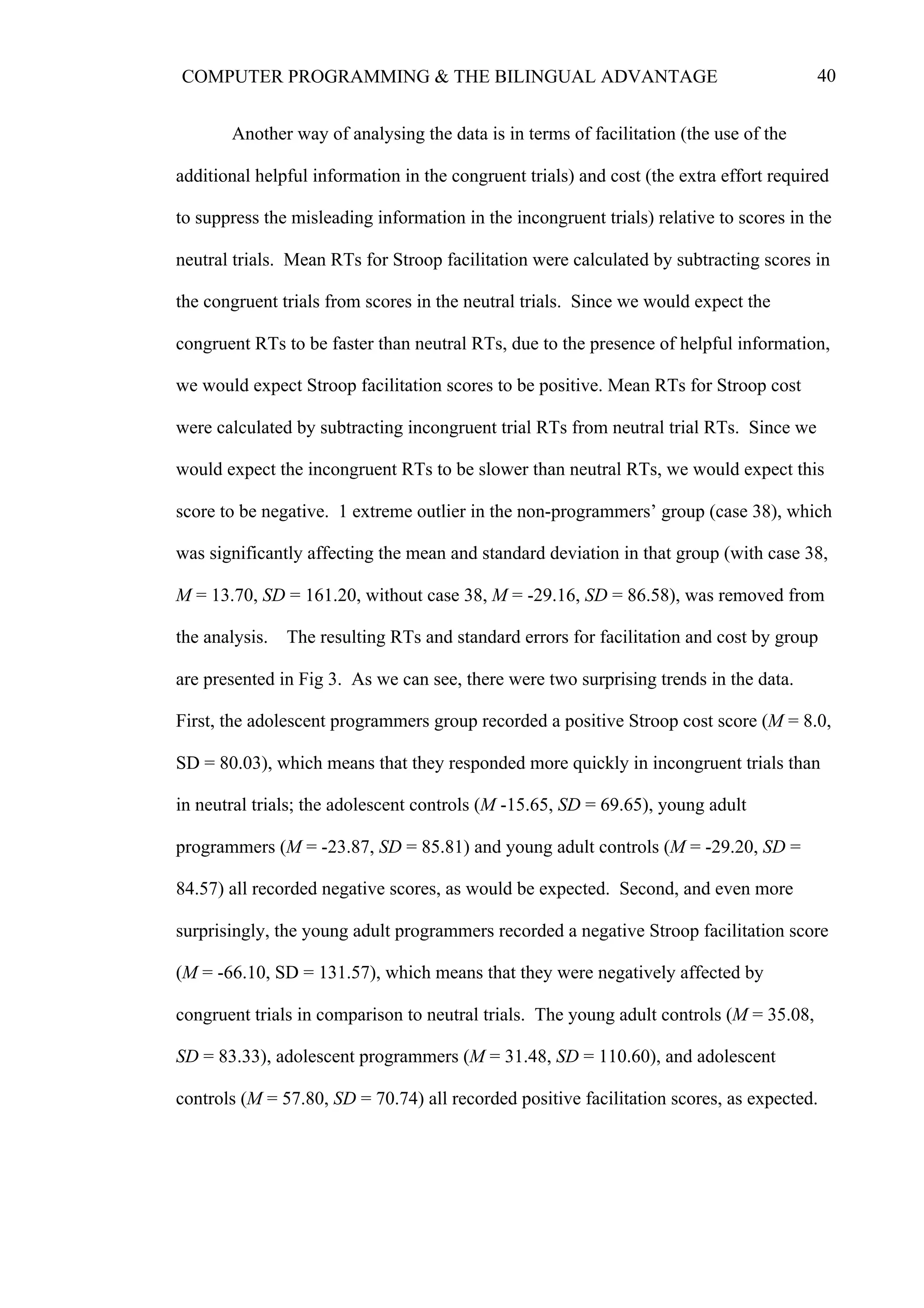

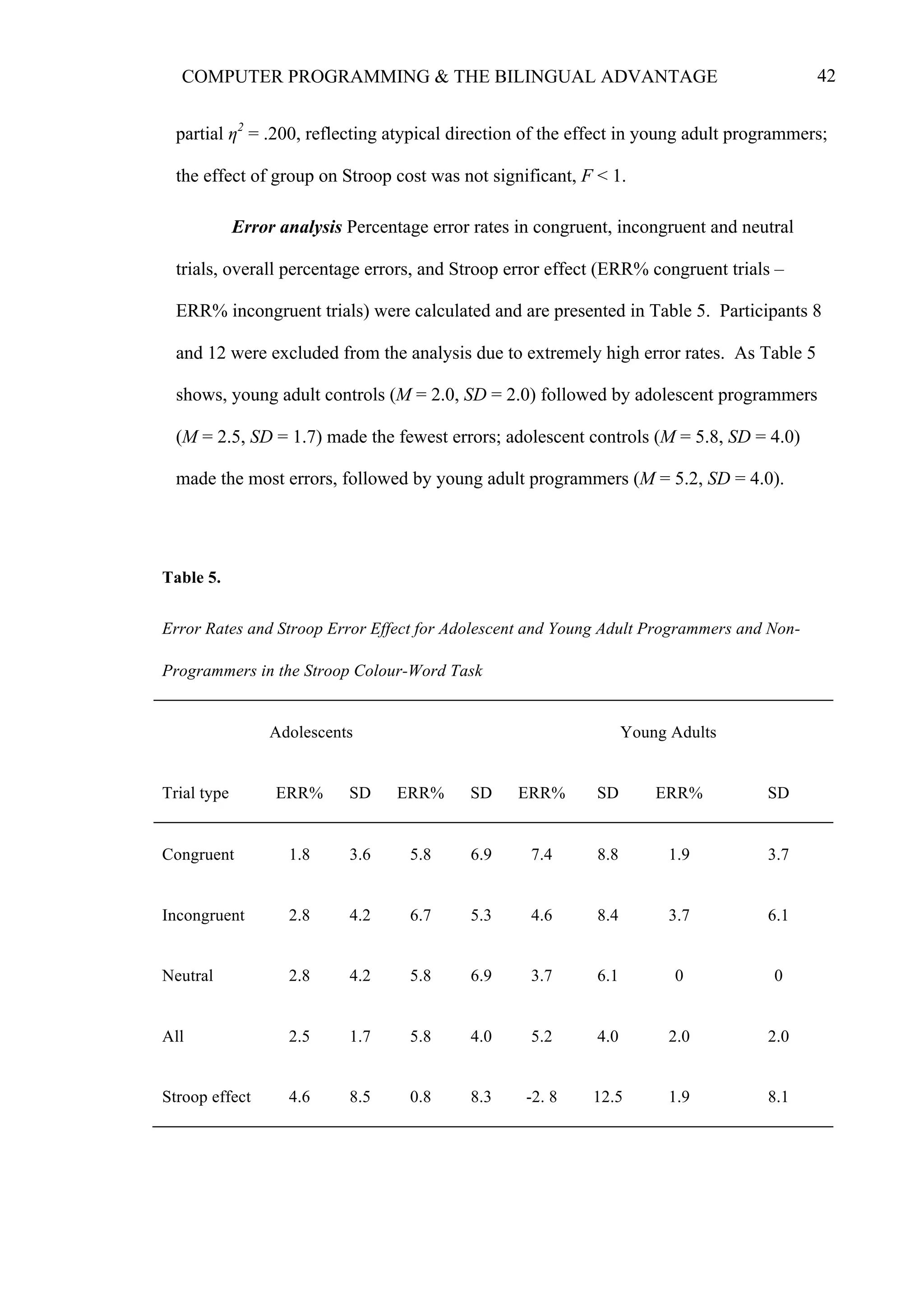
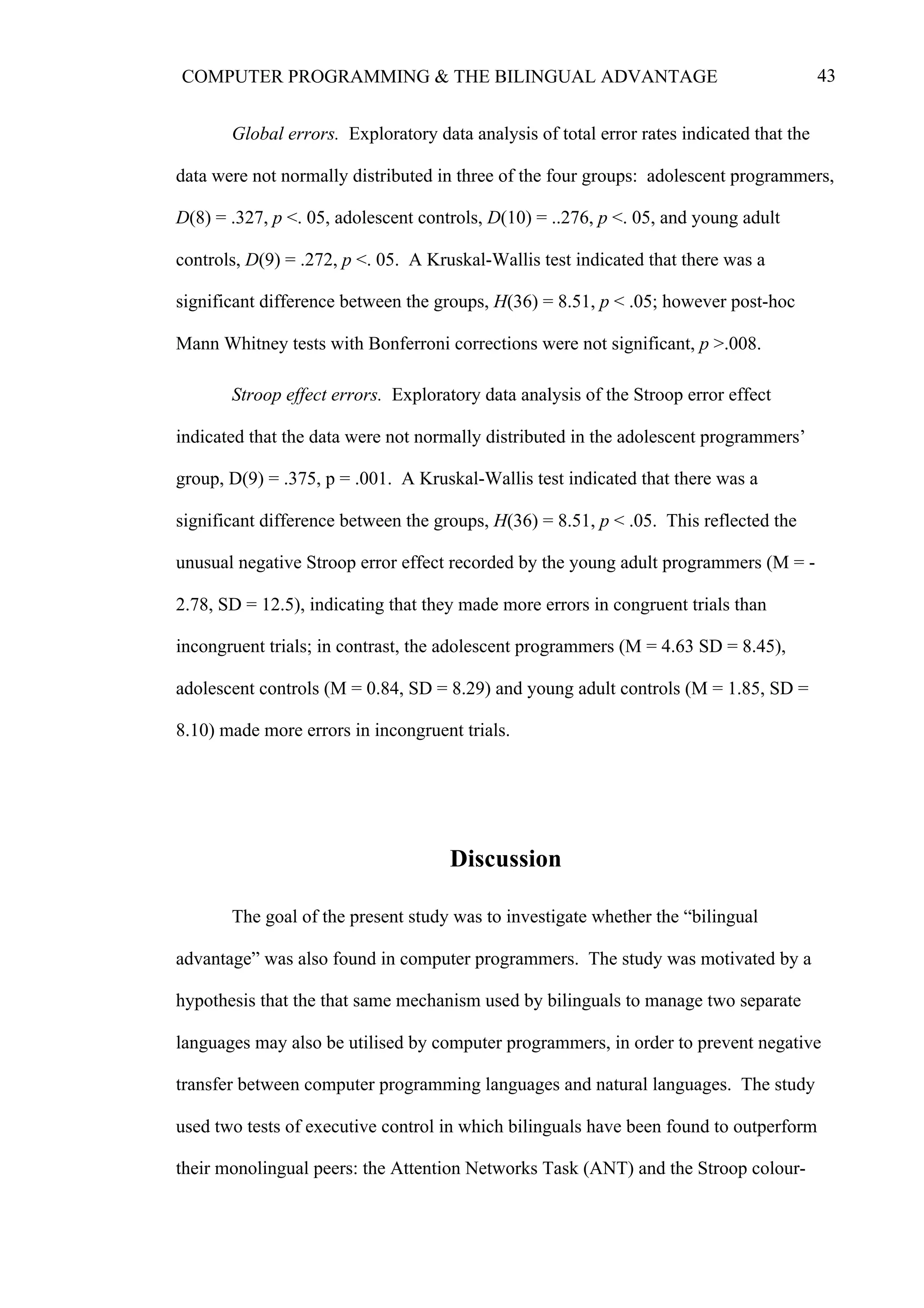
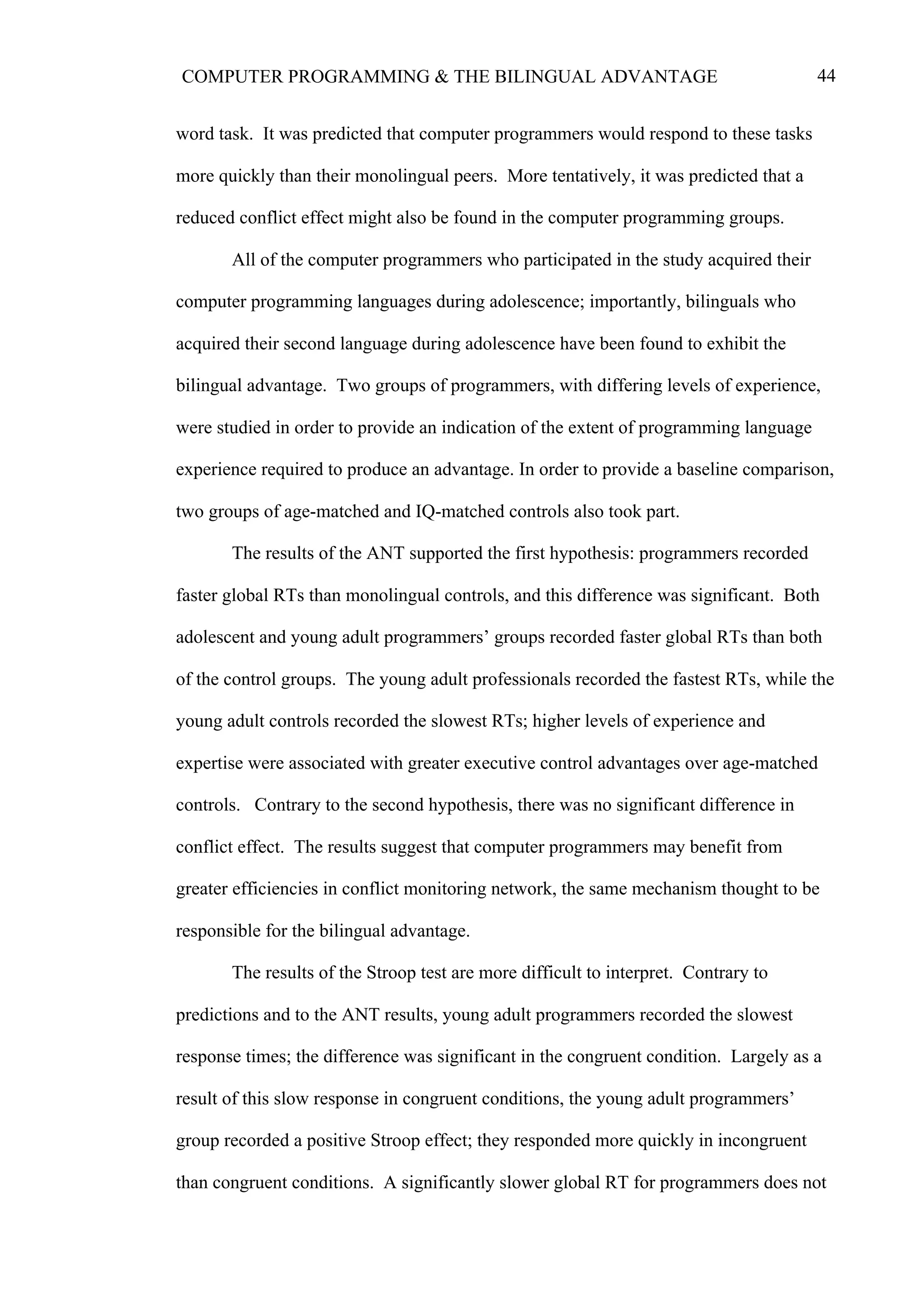
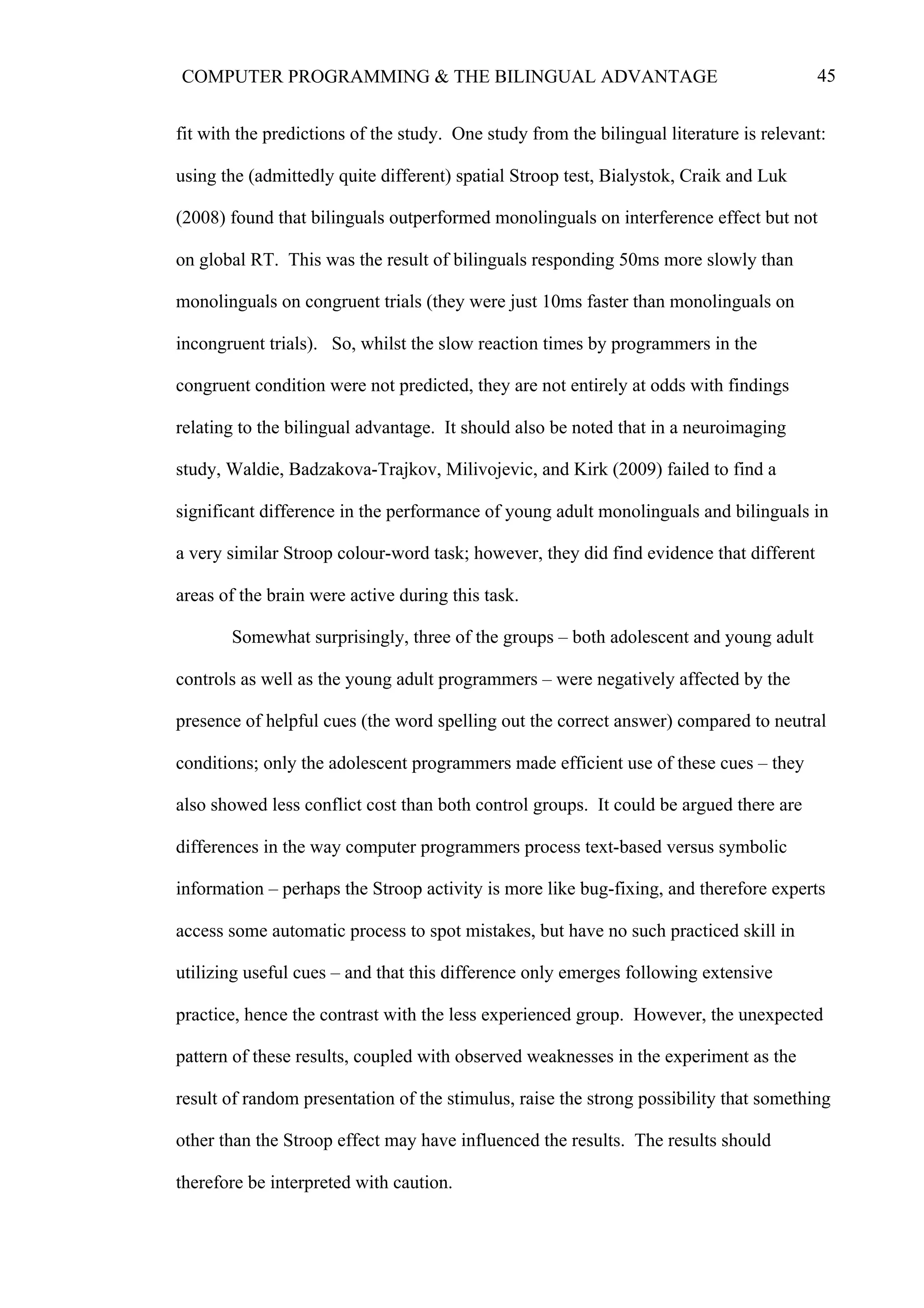
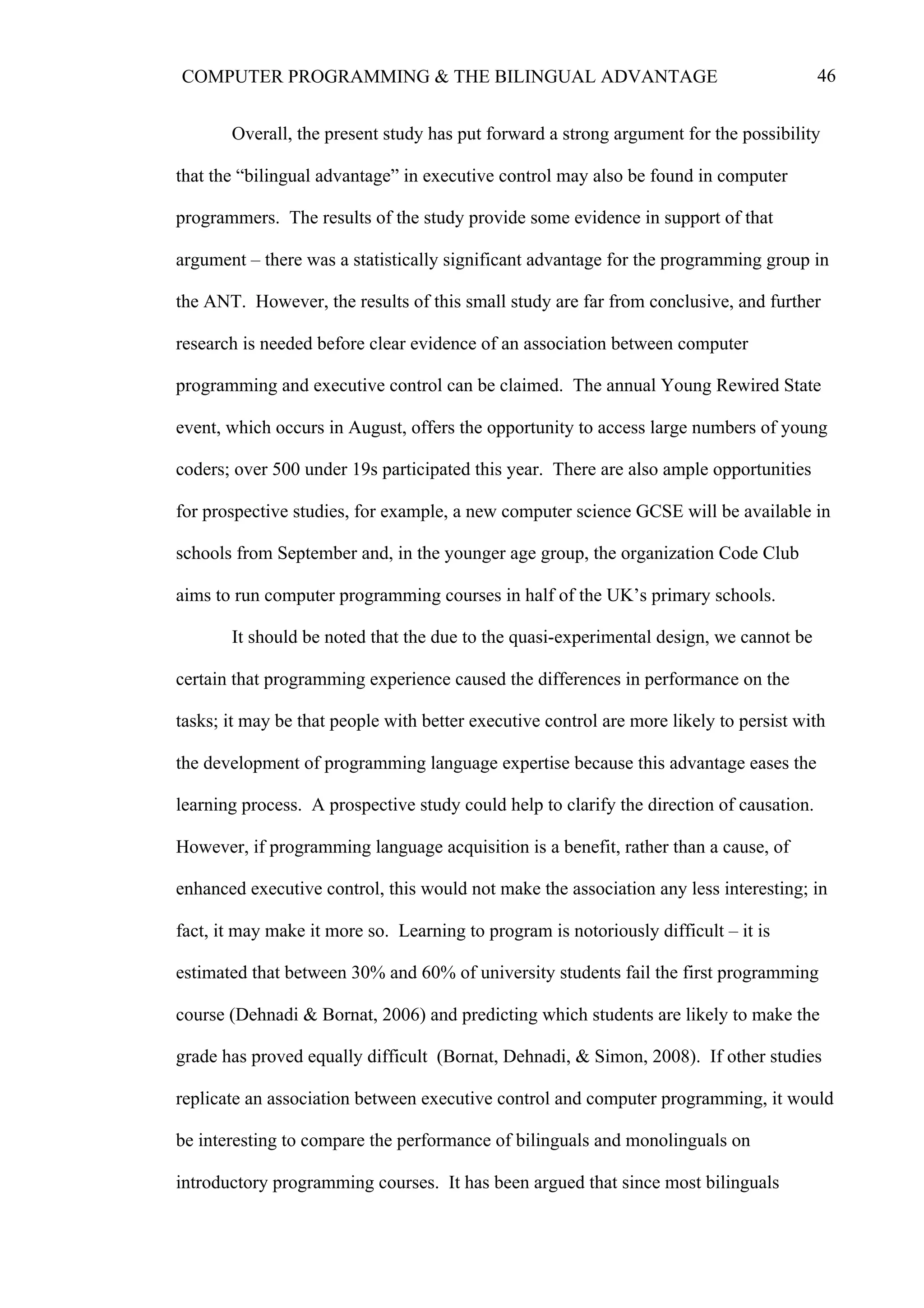
![47COMPUTER PROGRAMMING & THE BILINGUAL ADVANTAGE
acquire two languages as a result of circumstance, rather than as a result of social
advantages or cognitive abilities, the bilingual advantage is likely to be causal (though
this argument is not yet been supported by prospective studies). If second language
acquisition could help to develop the cognitive prerequisites of learning to program, this
could have important implications for computer science education.
[Words: 11,341, excluding references and diagrams]](https://image.slidesharecdn.com/dissertationfinal-140523112640-phpapp01/75/Young-Minds-and-Computer-Coding-47-2048.jpg)
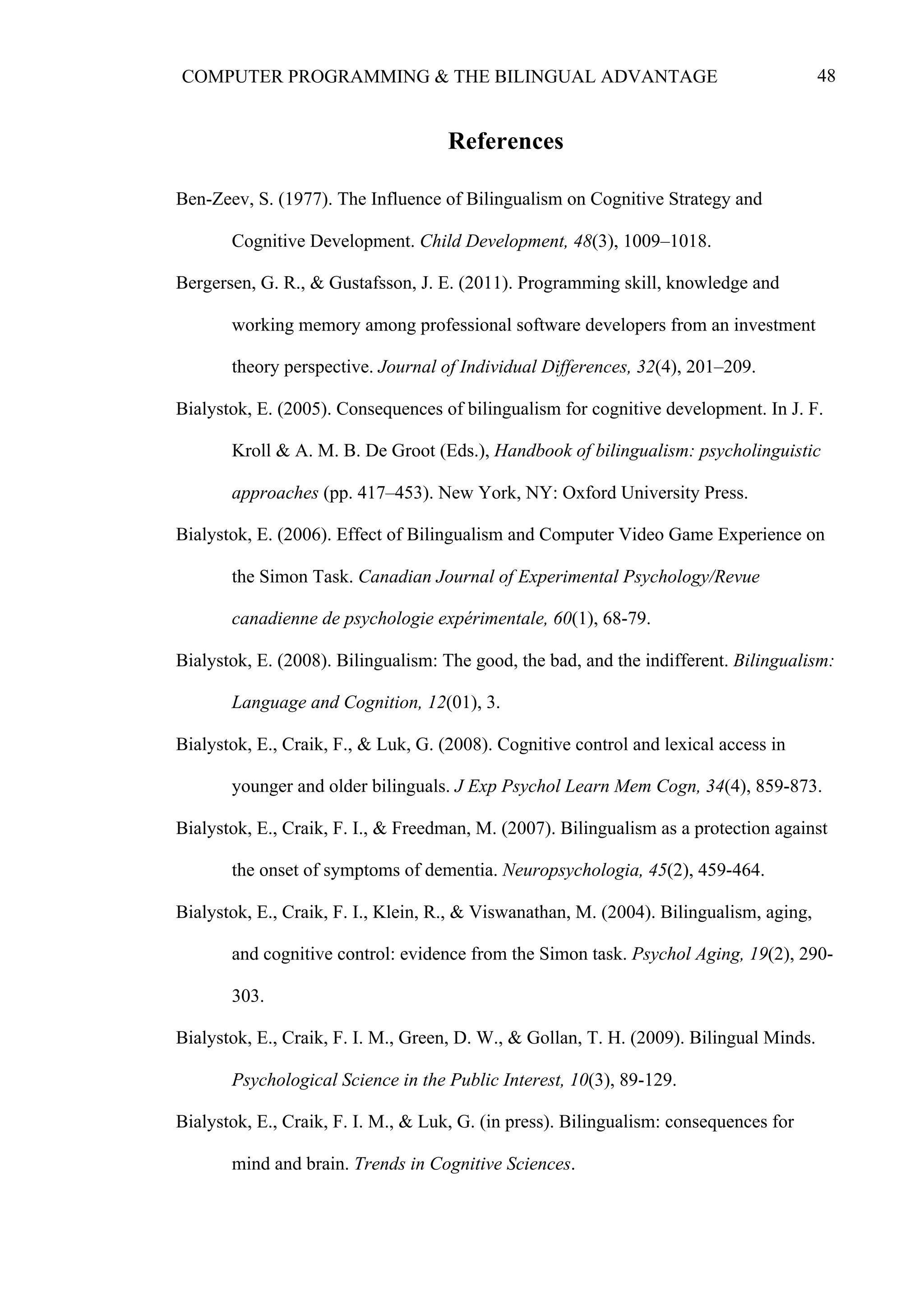
![49COMPUTER PROGRAMMING & THE BILINGUAL ADVANTAGE
Bialystok, E., & DePape, A. M. (2009). Musical expertise, bilingualism, and executive
functioning. J Exp Psychol Hum Percept Perform, 35(2), 565-574.
Bialystok, E., Martin, M. M., & Viswanathan, M. (2005). Bilingualism across the
lifespan: The rise and fall of inhibitory control. International Journal of
Bilingualism, 9(1), 103-119.
Bornat, R., Dehnadi, S., & Simon. (2008). Mental models, Consistency and
Programming Aptitude. Paper presented at the Proceedings of the tenth
conference on Australasian computing education, Wollongong, NSW, Australia.
Boroditsky, L. (2001). Does language shape thought? Mandarin and English speakers'
conceptions of time. [Research Support, U.S. Gov't, Non-P.H.S.]. Cogn Psychol,
43(1), 1-22. doi: 10.1006/cogp.2001.0748
Botvinick, M. M., Cohen, J. D., & Carter, C. S. (2004). Conflict monitoring and anterior
cingulate cortex: an update. Trends Cogn Sci, 8(12), 539-546.
Brefczynski-Lewis, J. A., Lutz, A., Schaefer, H. S., Levinson, D. B., & Davidson, R. J.
(2007). Neural correlates of attentional expertise in long-term meditation
practitioners. Proc. Nat. Acad. Sci., 104(27), 11483–11488.
Carlson, S. M., & Meltzoff, A. N. (2008). Bilingual experience and executive
functioning in young children. Dev Sci, 11(2), 282-298.
Cherubini, M., Venolia, G., DeLine, R., & Ko, A. J. (2007). Let's go to the whiteboard:
how and why software developers use drawings. Paper presented at the
Proceedings of the SIGCHI conference on Human factors in computing systems,
San Jose, California, USA.
Cohen, A., & Haberman, B. (2007). Computer Science: A Language of Technology.
Inroads — SIGCSE Bulletin, 39(4).
Colzato, L. S., Bajo, M. T., van den Wildenberg, W., Paolieri, D., Nieuwenhuis, S., La
Heij, W., & Hommel, B. (2008). How does bilingualism improve executive](https://image.slidesharecdn.com/dissertationfinal-140523112640-phpapp01/75/Young-Minds-and-Computer-Coding-49-2048.jpg)
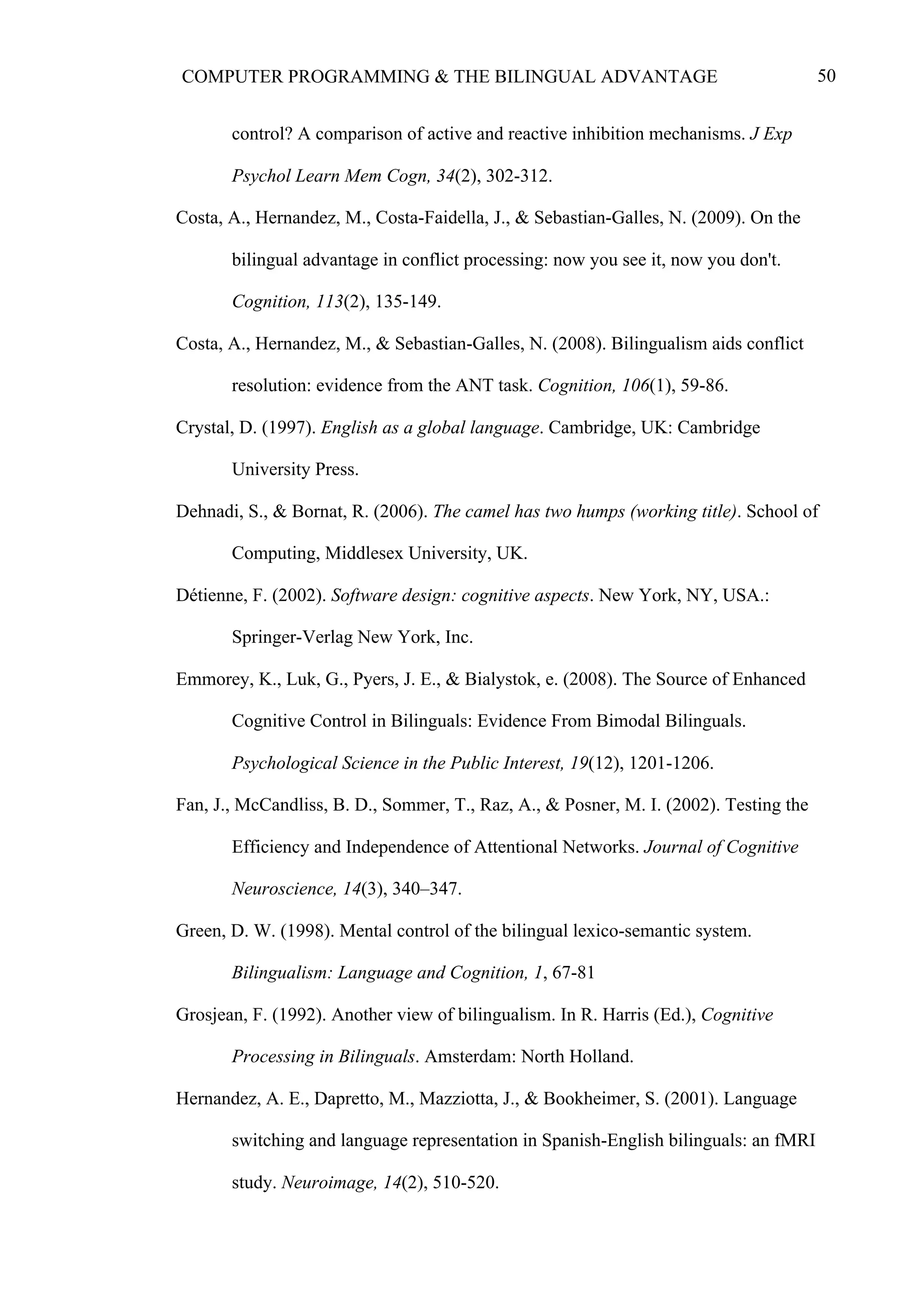
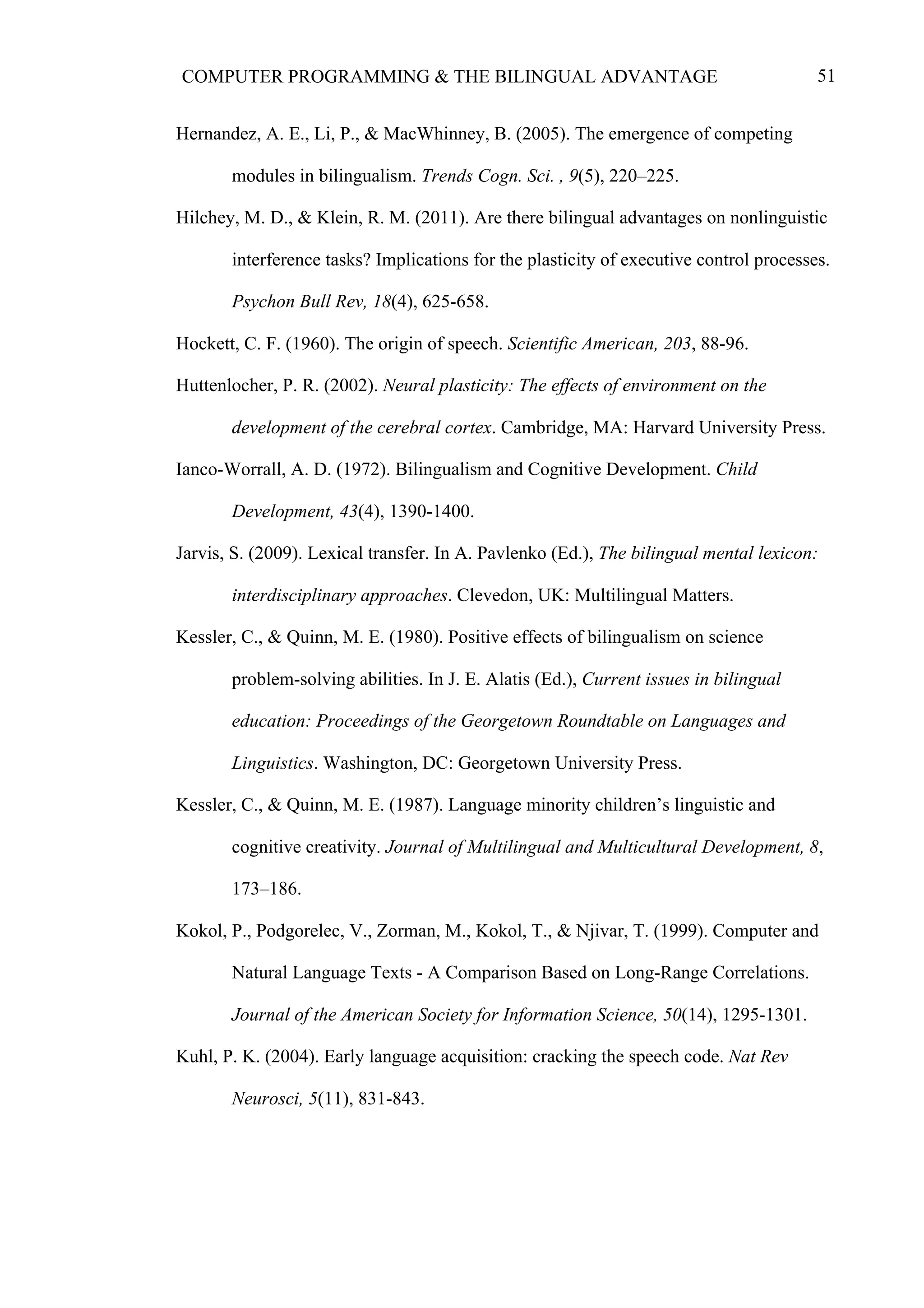
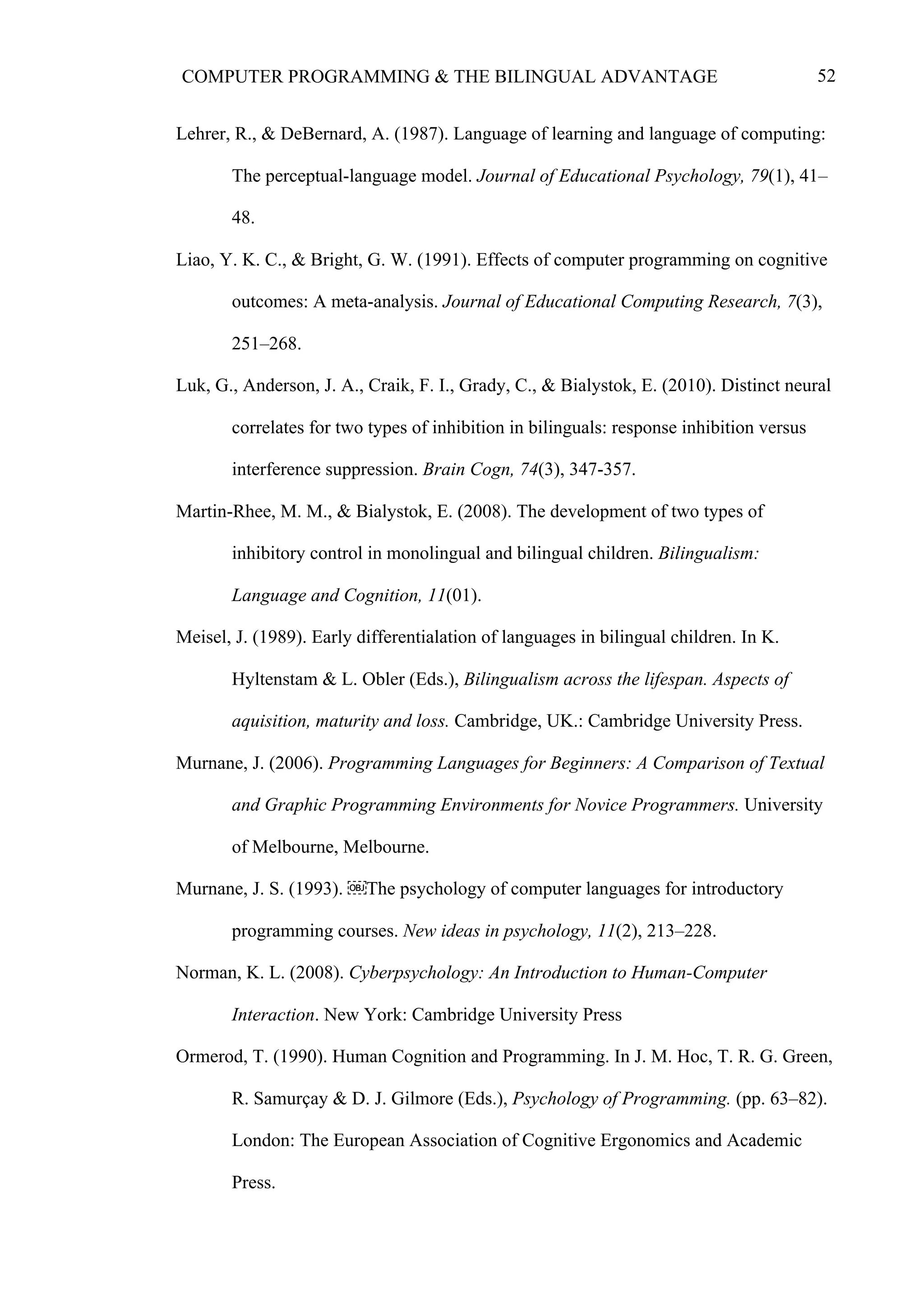
![53COMPUTER PROGRAMMING & THE BILINGUAL ADVANTAGE
Palumbo, D. B. (1990). Programming Language/Problem-Solving Research: A Review
of Relevant Issues. Review of Educational Research, 60(1), 65-89.
Papert, S. (1980). Mindstorms: Children, Computers, and Powerful Ideas. New York,
NY: Basic Books.
Pascual-Leone, A. (2001). The Brain That Plays Music and Is Changed by It. Annals of
the New York Academy of Sciences, 930: 315–329., 930, 315–329.
Pavlenko, A., & Jarvis, S. (2002). Bidirectional Transfer. Applied Linguistics, 23(2),
190–214.
Pea, R. D. (1983). Logo Programming and Problem Solving. [Technical Report No.
12.]. New York: Center for Children and Technology Bank Street College of
Education.
Pea, R. D., & Kurland, D. M. (1984). On the Cognitive Effects of Learning Computer
Programming. New Ideas Psychol, 2, 137–168.
Peal, E., & Lambert, W. (1962). The relation of bilingualism to intelligence.
Psychological Monographs, 76(546), 1–23.
Peppler, K. A., & Warschauer, M. (2011). Uncovering Literacies, Disrupting
Stereotypes: Examining the (Dis)Abilities of a Child Learning to Computer
Program and Read. International Journal of Learning and Media, 3(3), 15-41.
Philipp, A. M., & Koch, I. (2009). Inhibition in language switching: what is inhibited
when switching between languages in naming tasks? J Exp Psychol Learn Mem
Cogn, 35(5), 1187-1195.
Resnick, M., Silverman, B., Kafai, Y., Maloney, J., Monroy-Hernández, A., Rusk, N., .
. . Silver, J. (2009). Scratch. Communications of the ACM, 52(11), 60.
Ricciardelli, L. A. (1992). Bilingualism and cognitive development in relation to
threshold theory. Journal of Psycholinguistic Research, 21, 301–316.](https://image.slidesharecdn.com/dissertationfinal-140523112640-phpapp01/75/Young-Minds-and-Computer-Coding-53-2048.jpg)

